DGTronik - PCB
ASSEMBLY EXPERTS
DG Tronik - PCB ASSEMBLY EXPERTS
LA MAREHOUSING ON THE WATER
LA MAREHOUSING ON THE WATER
RELPOL S.ARELAYING SUCCESS
R ELPOL S.ARELAYING SUCCESS
NEW TECH HUB TO ACCELERATE NEXT GENERATION AIRBUS WINGS
NEW TECH HUB TO ACCELERATE NEXT GENERATION AIRBUS WINGS

VOLUME 33/2 – 2023
IMAGE: ©AIRBUS
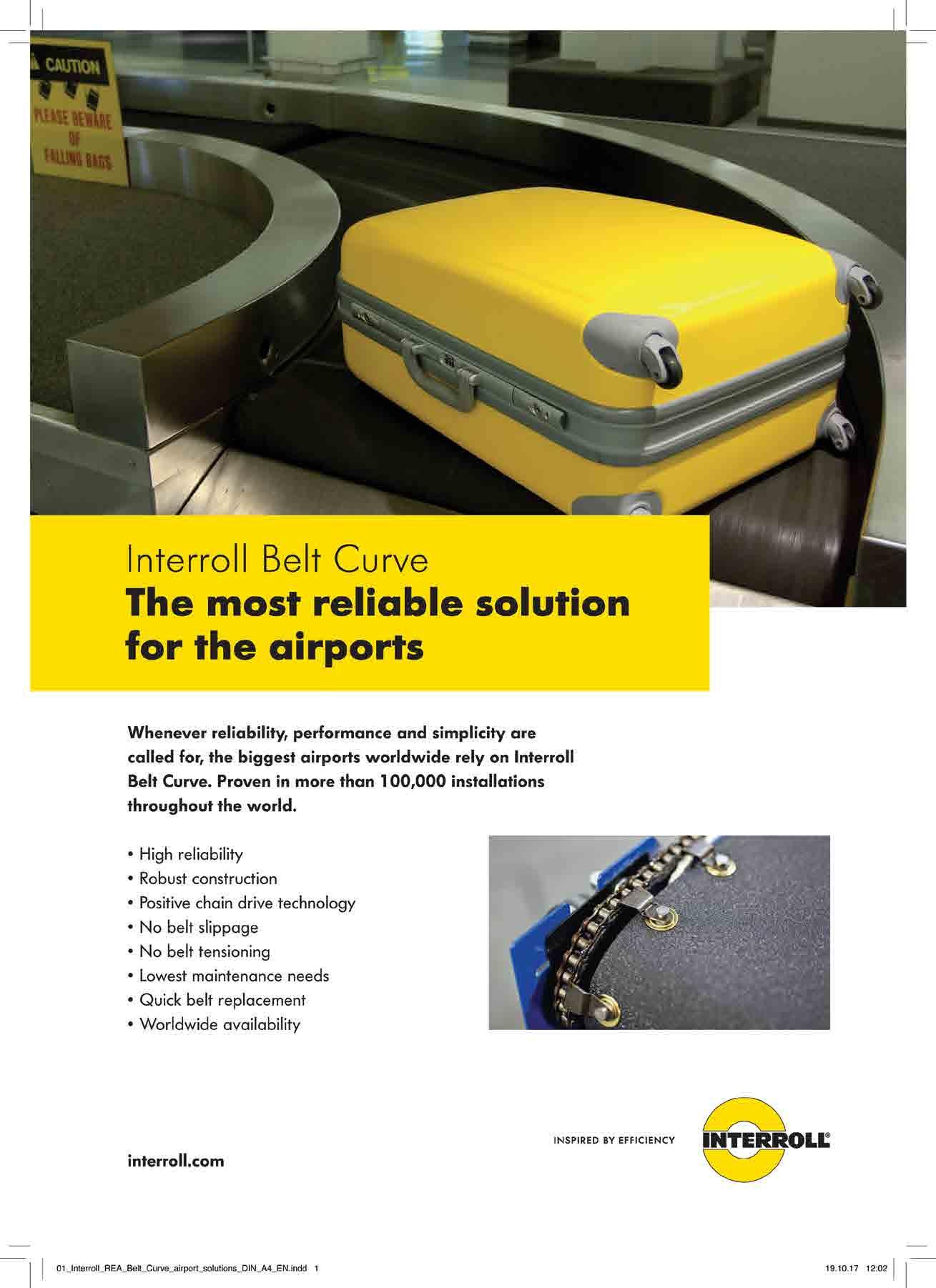
A Too-Hot Tango: Europe's Dance with Climate Change & the Persistent Wildfires
Ah, Europe. When one imagines this eclectic continent, we often envision Parisian streets filled with fashionforward individuals, Italian piazzas bursting with mouth-watering aromas, or the vibrant streets of Barcelona humming with energetic nightlife. The last thing one expects to think about is an unbearable sauna, yet here we are. Europe is turning up the heat, and unfortunately, we're not talking about the latest summer styles or fiery flamenco.
Europe, renowned for its cultural diversity, its timeless architectural marvels, and its palate-pleasing cuisines, is currently caught in a fervent embrace with a heatwave, sparking off wildfires across the continent. The sun-dappled piazzas of Italy and the picture-perfect chalets of France, usually abuzz with lively chatter and laughter, are now uncomfortably simmering under the relentless summer sun. From the lavender fields of Provence to the vineyards of Tuscany, this relentless heat is relentless, casting a worrisome shadow over Europe's beautiful landscapes.

Surprisingly, even the snow-clad expanses of Sweden, a country where the concepts of 'hygge' and 'lagom' provide a counterbalance to the icy winters, is now facing a blazing predicament. The usual winter wonderland is wrestling with wildfires, swapping snowmen for sandcastles, and adding a rather unexpected and unwanted twist to their summer narrative.
Interestingly, even the Vatican City, a holy enclave known more for spiritual warmth than physical heat, isn't exempt from this situation. As the Pope contemplates from his balcony, the trials of fire mentioned in biblical texts might be feeling a bit too close for comfort. From his pulpit, the call for climate action may resonate stronger, backed by a vista of a city grappling with a temperature crisis.
In the Iberian Peninsula, Spain and Portugal, usually lauded for their passionate performances of Flamenco and Fado respectively, are dancing a different kind of duet. The usual sun-drenched landscapes, typically the backdrop for idyllic holiday memories, have been thrust onto a blazing stage, transforming the region's picturesque beauty into a scene straight out of Dante's Inferno.
have milder summers. Rather, it's a wakeup call, a call to arms. It's a reminder that we, as global citizens, need to put forth a unified front against this warming enemy.
The soul of Europe is not encapsulated in the current sweltering conditions. Instead, it thrives in its rich cultural tapestry, its diverse gastronomic delights, and the warm hearts of its people. The goal is to ensure that the only things heating up in Europe are the delectable pastries in the bakeries of Vienna, or the intense football rivalries that unite and divide in equal measure.
Tackling climate change is a marathon, not a sprint. We need to change the narrative from Europe's climate crisis to Europe's climate solution. It's high time we bid farewell to the era of sweat-soaked shirts and sunburn and welcome the era of sustainable solutions and innovative adaptations.
The French Riviera, an unparalleled destination for sun and sea lovers, might need to rethink its brand. The 'Côte d'Azur', famed for its crystal-clear waters and golden beaches, might soon have to contend with an unwelcome addition to their summer ensemble - smoke from wildfires. This is not the plot twist sunbathers or yacht enthusiasts signed up for when booking their summer getaway.
Climate change, once a subject debated in the hallowed halls of academia and environmental forums, is no longer a distant threat. It's here, and it's turning up the temperature. Europe, in response to the global warming reports, seems to have thrown down the gauntlet, as if challenging the sun to a duel. And currently, it seems like the sun is gaining the upper hand.
Yet, this is not a time to pack up your winter gear and plan for a vacation in the usually sunny Greece, now expected to
The responsibility is heavy, but it's not insurmountable. Each one of us can contribute to the solution. Together, we can replace the sizzling heat with a spark of hope, exchange apprehension for proactive action, and ensure a brighter, cooler, more sustainable future for everyone.
Europe has always been a testament to resilience, diversity, and unity. Even though the current temperatures seem to be hitting an all-time high, the spirit of its people is far from diminished. Together, we can and will make a difference. Let's ensure that our future remains 'cool' in every sense of the word, where the only heat we encounter is the warmth of European hospitality.
After all, the sizzling summer is a challenge, but it's also an opportunity - a chance for us to come together, unite in our efforts, and make Europe a beacon of sustainable practices. So, let's rise to the challenge and ensure that the only 'fire' we associate with Europe is the passion and zeal of its incredible citizens. n
Industry Europe 3
Europe has always been a testament to resilience, diversity, and unity. Even though the current temperatures seem to be hitting an all-time high, the spirit of its people is far from diminished.

4 Industry Europe CONTENTS VOL 33/2 Comment 3 Editorial: A Too-Hot Tango: Europe's Dance with Climate Change & the Persistent Wildfires. Focus on – Aerospace & Defence 5 NMARSAT to launch I-8 satellites to power L-BAND network. 6 New Tech Hub to Accelerate Next Generation Airbus Wings. 7 Electric ‘Air Taxis’ One Step Closer. Focus on – Technology & Innovation 8 Nokia site solutions enhance power efficiency Aerospace & Defence 10 Aerospace & Defence news The latest developments in the sector Chemicals & Biochemicals 12 Chemicals & Biochemicals news The latest developments in the sector Construction & Engineering 14 Construction & Engineering news The latest developments in the sector Consumer Goods 16 Relaying success RELPOL S.A 22 Housing on the water La Mare 26 Consumer Goods news The latest developments in the sector Energy & Utilities 28 Energy & Utilities news The latest developments in the sector Healthcare 30 Healthcare news The latest developments in the sector Metals & Mining 32 Metals & Mining news The latest developments in the sector Politics & Economics 34 Politics & Economics news The latest developments in Politics and Economics Technology & Innovation 36 PCB assembly experts DGTronik 42 Technology & Innovation news The latest developments in Tech and Innovation Transportation 44 Transportation news The latest developments in the sector Editorial Director Roger Sullivan Profile Writers Romana Moares Dariusz Balcerzyk Emma-Jane Batey Director of Sale & Business Development Katarzyna Pozoga Business Partner, Poland Magdalena Grzempczyńska Art & Design studio@industryeurope.net Editorial Office editor@industryeurope.net Accounts accounts@industryeurope.net Industry Europe 110 Boundary Road, Norwich NR6 5JE, United Kingdom Tel: +44 1133 281 173 Email: studio@industryeurope.net Web: www.industryeurope.com LinkedIn: www.linkedin.com/company/industry-europe MAX MEDIA GLOBAL LTD. INDUSTRY EUROPE © Industry Europe 2023 No part of this publication may be reproduced in any form for any purpose, other than short sections for the purpose of review, without prior consent of the publisher.
The satellite operator has announced its new Inmarsat-8 small satellites will launch in 2026 to provide crucial safety services and support advances in emergency tracking.
NMARSAT TO LAUNCH I-8 SATELLITES TO POWER L-BAND NETWORK NMARSAT TO LAUNCH I-8 SATELLITES TO POWER L-BAND NETWORK
Inmarsat, a world leader in global, mobile satellite communications, has announced that SWISSto12, one of Europe’s fastest growing aerospace providers, will develop its new eighth-generation of spacecraft. The three I-8 satellites will provide additional network resilience, securing the future of Inmarsat’s global L-band safety services.

SWISSto12, headquartered in Switzerland, will use its HummingSat satellite platform - in conjunction with unique 3D-printing technologies and specialised Radio-Frequency (RF) and payload products - to develop and manufacture the geostationary satellites, which will launch by 2026.
Just 1.5 cubic metres in volume, the I-8’s will use SWISSto12’s innovative new class of spacecraft which has a form factor up to five times smaller than conventional geostationary satellites yet can still deliver critical safety services with certainty.
The three l-8 satellites will continue to provide the extra layer of resilience to complement the existing constellation and Inmarsat’s two I-6 generation satellites, which were launched in December 2021 and February 2023. In March 2023, Inmarsat announced the first, I-6 F1, had successfully completed testing with ground stations in Western Australia and has now started to provide Ka-band services for the fast-growing Asia Pacific region. The company will begin introducing its L-band capacity and transitioning services to the new satellite throughout 2023.
The second, I-6 F2, which launched in February 2023, is expected to enter operational service over Europe, Africa, and much of the Americas in early 2024.
Each I-8 will also extend Inmarsat’s history of launching and operating radionavigation transponders for Governments and international space agencies. These transponders can enable Satellite-Based Augmentation System (SBAS) services around the world, for example for air traffic controllers or coastguards. SBAS systems use satellite connectivity, land-based infrastructure, and software to enhance standard GPS/Galileo accuracy of 5 to 10 metres to as little as just 10cm.
Such precise tracking could enable pinpoint safety navigation on aircraft, help emergency services reach vessels in distress more quickly, or allow a raft of industrial innovations, like device tracking in agriculture or advanced, automated transport management systems.
The I-8 satellites will continue to secure Inmarsat’s global safety services into the 2040’s. The company was founded in 1979 under the auspices of the United Nations specifically to provide highly reliable safety communications. Today some 1.6 million seafarers and over 200 airlines rely on Inmarsat’s global L-band network to deliver 99.9% availability every day.
The Inmarsat-8 programme forms part of Inmarsat’s fully funded technology roadmap, which will include five new satellite payloads added by 2025 to further Inmarsat’s high-
speed broadband Global Xpress (GX) network with the launch of the software defined satellites GX 7,8, and 9, aimed for 2025, and the polar coverage satellites GX10a and b, which are aimed for the first half of 2024.
Peter Hadinger, Chief Technology Officer, Inmarsat, said: “Every single day people around the world depend on Inmarsat services. Our customers have demanding, and often safety critical, missions that rely on our satellite technology for links that can make the difference. The I-8’s will not only underpin our existing capabilities for the future; but enable ever more advanced safety innovations like SBAS that can ultimately help save more lives. We have chosen SWISSto12 because they have the ground-breaking technology that can make it a reality.”
Emile de Rijk, CEO, SWISSto12, said: “We are delighted that Inmarsat has selected SWISSto12 as its partner for its landmark l-8 program. It demonstrates that, with HummingSat, we have created a highly advanced new class of small geostationary spacecraft that delivers world-leading connectivity capabilities at a fraction of the cost. Our proprietary 3D-printing of Radio Frequency payload technology allows us to push the limits of existing capability and service new and existing business cases for geostationary satellite communications. This is an important step in our journey to better connect and protect every corner of the world.”
Industry Europe 5 FOCUS ON – AEROSPACE & DEFENCE
n
NEW TECH HUB TO ACCELERATE NEXT GENERATION AIRBUS WINGS
Airbus says the new facility will help accelerate the design, build and testing of wings for next generation aircraft, by using the latest technology and world-leading demonstrators to further improve the performance of its wings.
Alongside engine optimization, making wings longer, leaner and lighter is one of the biggest opportunities to improve fuel efficiency, reduce CO2 and ultimately work towards the aviation industry’s ambition to achieve net zero carbon emissions by 2050.
“The new Wing Technology Development Centre will help us to ground our research in practicality,” said Sue Partridge, Airbus head of Filton site and Wing of Tomorrow Program. “A key element of how we deliver technology for next generation aircraft wings is through Wing of Tomorrow (WoT), our largest research and technology program led by the team in the UK. Last week, we achieved a critical milestone in the program when our second wing demonstrator was completed by the team in Broughton, Wales and delivered to the WTDC. Here it will be prepared for structural testing in our Aerospace Integrated Research and Technology Center (AIRTeC).”
The WoT program allows Airbus to explore new manufacturing and assembly technologies so future generations can continue to benefit from flying.
“It’s about preparing our people, technology, industrial system, supply chain and digital and physical capabilities for next generation aircraft. We’re leveraging industry partners and the very best digital tools and automation to identify potential technology bottlenecks that may slow us down in the future. The foundations we
lay now will help us build better and faster when the time comes.”
The WTDC adds to Airbus’ existing research and technology footprint in the UK, including the Advanced Manufacturing Research Center (AMRC) in Broughton and both the ZEROe Development Center and Aerospace Integrated Research & Test Center (AIRTeC) at its Filton site.

Since 2014, Airbus has been awarded £117 million by the Aerospace Technology Institute for Wing of Tomorrow related research. n
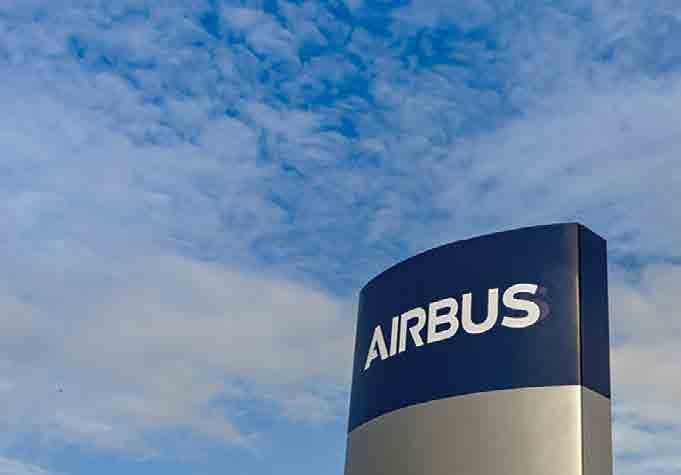
FOCUS ON – AEROSPACE & DEFENCE 6 Industry Europe
Nusrat Ghani, UK Minister of State at the Department for Business and Trade opening the Wing Technology Development Centre with Airbus team. Image: ©Airbus SAS 2023
Credit: Shutterstock (Ceri Breeze)
ELECTRIC ‘AIR TAXIS’ ONE STEP CLOSER
Node4 Set To Support Skyports Infrastructure in Delivery of Global Network Infrastructure and CloudBased Data Analysis Capabilities.
Once the stuff of science fiction, passenger-carrying electric urban air taxis could soon be a reality in major cities across the world. This revolutionary form of transport is one step nearer to reality after Skyports Infrastructure, the leading provider of vertiports for the advanced air mobility (AAM) industry, commissioned Node4 to deliver the underlying IT network components and data analysis capabilities needed for vertiport operations. Under the terms of the agreement, Node4, the cloud-led digital transformation Managed Services Provider (MSP), will support Skyports Infrastructure by building a global SD-WAN capability. Due to go live at its first UK location later this year, SD-WAN will eventually cover further UK sites and extend to other Skyports Infrastructure facilities in the USA, Dubai and France. Ultimately, SD-WAN will also provide the enabling technology and connectivity for Skyports Infrastructure’s global vertiport operations — supporting safe and efficient integration of electrical vertical take-off and landing (eVTOL) aircraft and ground infrastructure. Adopting SD-WAN will reduce time to deployment at each of Skyports Infrastructure’s vertiport facilities while centralising

and streamlining remote operations — allowing the company to monitor and manage a network of vertiports in near real-time while maintaining a cost-effective, lean and agile IT team. Once operational, SD-WAN will deliver consistent availability and performance, as well as centralized management and strong network security.
“Everyone at Node4 is so easy to work with,” explained Dan Lambeth, site reliability engineer at Skyports Infrastructure. “The team are approachable and flexible — always offering to go above and beyond for us. Node4 also provides invaluable guidance to build Skyports Infrastructure’s in-house expertise.”
Lambeth continues: “We have a long technology journey ahead of us, but with the support of key technology partners such as Node4 and the insight they provide, the journey will be smooth. Looking to the next 12 to 24 months of technology development, we’re in an excellent position to continue at pace with our vertiport technology product.”
Skyports Infrastructure’s IT team is also drawing on Node4’s extensive cloud-based knowledge – and Node4 has already helped

Skyports Infrastructure build and configure several Azure landing zones to support the development of bespoke vertiport IT systems and software. They will also enable the development of the APIs needed to allow vertiport partners and operators to connect, collaborate and share data easily. Node4 is also supporting Skyports Infrastructure with a large-scale, cloud-based data warehousing project that’s designed to store, capture and facilitate analysis of aircraft telemetry and journey data, including weather and optimal route information.
“We’re delighted to be playing a pivotal role in helping Skyports Infrastructure realise its mission of making electric air taxi travel a reality – and supporting the development and operation of its vertiports,” comments Iain Shearman, COO, Node4. “Network infrastructure solutions, in combination with our Azure and Database experience, have the potential to bring about such a reimagining of urban travel. I can’t wait to see how this project develops and, who knows, to take one of the first eVTOL flights from a Skyports Infrastructure vertiport in the nottoo-distant future.” n
Industry Europe 7
NOKIA SITE SOLUTIONS ENHANCE POWER EFFICIENCY OF AIRSCALE DEPLOYMENTS BY UP TO 30 PERCENT
• Nokia’s all-in-one portable, outdoor cabinet solution is designed for all deployment scenarios saving on time, cost, and energy consumption
• Nokia’s advanced energy solutions can reduce total energy consumption on sites by up to 30 percent and cooling power consumption by 60 to 99 percent; also reduces installation time and simplifies maintenance over a product’s lifetime

• Nokia's NetAct network management solution can control energy systems; new market-leading rectifier combines 6kw capacity with 97 percent power efficiency

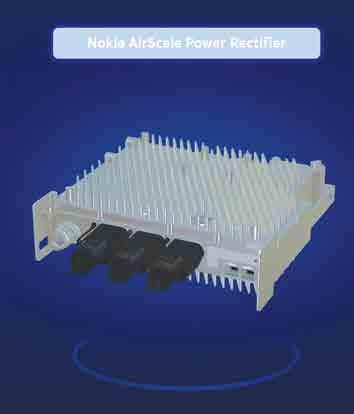
Nokia today announced the availability of its new expanded portfolio of energy-efficient site solutions designed for its industry-leading AirScale baseband portfolio, including a pre-integrated ‘all-inone’ cabinet solution and a zero-footprint site solution that features a high-capacity
(6kw) power rectifier with market-leading, 97 percent power efficiency. The optimized outdoor solutions reduce the total energy consumption on sites by up to 30 percent. The zero-footprint deployments use up to ninety-nine percent less cooling energy due to natural outdoor temperatures, avoiding
site rental costs and requiring minimal space and installation time.
The easy-to-deploy ‘all-in-one’ outdoor, modular cabinets are available in different variants covering all site conditions. They can seamlessly accommodate preintegrated components such as baseband
FOCUS ON – TECHNOLOGY & INNOVATION
units, Nokia’s advanced dual bay cooling systems enabling optimized cooling for electronics and batteries separately, as well as its latest high-performance, industry-leading rectifiers and batteries. Pre-integration means there is less demand for civil work as well as easier maintenance and reliability.
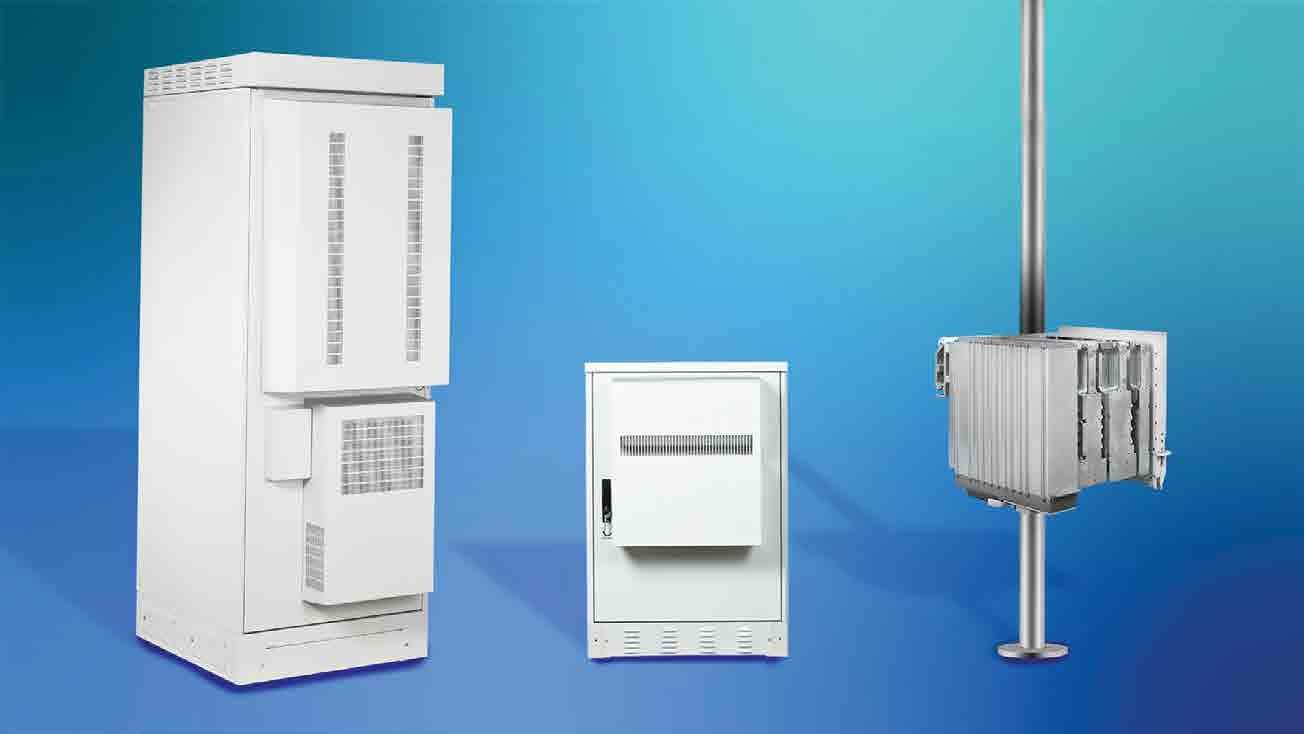
The zero-footprint solutions give mobile operators the option to install all equipment directly to a mast or wall, eliminating the need for air conditioning. This minimizes the consumption of energy and space as well as integration and maintenance costs for a wide variety of radio site deployment scenarios. Zero-footprint solutions are ideal also for noisesensitive areas where solutions with fans and active cooling may not be an option.
These solutions are designed for NetAct, Nokia's network management platform, and support many additional energy-saving features such as load shifting as well as solar power.
Energy consumption major driver of network transformation

Network energy costs account for approximately half of the costs facing network operators. In particular, the radio access network (RAN) accounts for approximately 80 percent of all mobile network energy consumption. The exponential growth in mobile traffic means that the number of
sites and related power consumption is rising, and at the same time, energy prices are increasing. At traditional indoor radio sites, up to half of the energy consumption can be used by auxiliary components such as fans, cooling systems, lighting, and other power supplies. Nokia’s new site solutions can minimize this energy consumption while helping operators slash both their energy bills and their carbon footprints.
Nokia has set sustainability goals to reduce its environmental impact and help its customers to do the same. The company has committed to reducing its greenhouse gas (GHG) emissions across its value chain (Scope 1, 2, and 3) by 50 percent between

2019 and 2030. Nokia’s technology is designed to be energy efficient, contributing towards the climate and environmental targets of mobile operators
Samir Kumar, Head of Mobile Network Services at Nokia, said: “Nokia’s expanded site solutions portfolio minimizes the energy consumption and deployment costs for virtually every radio site deployment scenario. Increased energy expenditure is a pain point for mobile network operators and our solutions help reduce these costs as well as having a significant environmental impact. This is another example of our commitment to ensuring we act sustainably throughout every area of our business.” n

Industry Europe 9
Image: cabinetzero-footprint. Credit: Nokia
New developments in the Aerospace & Defence
NATO army division in Europe.
Germany's Army Chief, Alfons Mais, expressed confidence that the nation would possess the most advanced army division among its European NATO allies by 2025. This determination comes as countries are urgently bolstering their military capabilities following Russia's invasion of Ukraine.

Presently, Berlin lacks a single combat-ready division, which typically comprises over 20,000 troops. However, the plan is to have the first of three divisions operational by 2025, with the second division following suit in 2027.
Mais conveyed his optimism, stating that the division for 2025 would initially be staffed with 80% to 90% of the required personnel, and these plans were agreed upon with NATO.
Germany's approach involves providing two mechanized brigades initially, followed by a more lightly armed medium brigade, with additional support from a Dutch brigade. Each brigade consists of approximately 5,000 troops. The goal is to collaborate with Dutch partners
and establish the best equipped division among all European NATO members by 2025.
Divisions serve as the fundamental building blocks of land forces, essential for handling conflicts with peer adversaries. Western nations, having focused on smaller wars in Iraq and Afghanistan, have been neglecting, dismantling, and depleting the weapons and ammunition of their divisions.
Mais acknowledged the challenge of sup plying enough ammunition to the division by 2025, given that Western countries are provid ing substantial ammunition to Kyiv, further depleting already low stocks since the end of the Cold War. He emphasized that this was a common problem faced by all NATO partners.
Despite the urgency in establishing the division, supporting Ukraine remains a top priority, as emphasized by NATO Secretary-General Jens Stoltenberg.
Regarding the second German division, scheduled to be combat-ready in 2027, its
full equipping depends significantly on purchases from the 100 billion euro special fund, which aims to modernize the long-neglected German military. German Chancellor Olaf Scholz's announcement of a "Zeitenwende" (historical turning point) after Russia's invasion of Ukraine signified a major shift in policy, leading to the establishment of this special fund.
Apollo Global Management, the private equity firm, has provided Air France-KLM with a substantial cash injection of $560 million.
funding sources has sparked increased competition for conventional leasing companies.
The newly acquired funding from Apollo will be allocated to support the French company's Engineering and Maintenance (MRO) components activity. It's crucial to note that this injection will not result in any change of ownership for the division, nor will it impact the existing employees' contracts, according to the company's statement.
As part of the agreement, Apollo will be subscribing to perpetual bonds that carry an initial interest rate of 6.9% for the first three years. Subsequently, there will be gradual step-ups and caps applied to the interest rate. Additionally, Air France will retain the option to redeem these bonds at any point after the initial three years.
Air France-KLM has officially announced the completion of a definitive agreement with private equity firm Apollo Global Management for a substantial capital injection of 500 million euros ($561 million) into one of its vital engineering and maintenance units.

In the aviation industry, sale and leaseback deals are frequently employed as financing mechanisms. However, the emergence of new
This is not the first collaboration between Air France-KLM and Apollo Global Management. In a similar move last year, the private equity firm had invested 500 million euros in the company, aiding in the repayment of French state aid.
Visit: www.airfranceklm.com/en
10 Industry Europe NEWS
Berlin's objective for 2025 is to possess the most technologically advanced
Thales to buy Cobham Aerospace Communications for $1.1 billion.
French defense and technology group Thales announced on Wednesday that it is currently in exclusive negotiations to acquire aerospace supplier Cobham Aerospace Communications for $1.1 billion. This move has propelled Thales shares up by over 3% as the company places its bets on connected cockpits.
As the world's third-largest producer of avionics for civil jetliners, Thales expects this all-cash acquisition to enhance its sales growth and operating profitability significantly. Furthermore, it positions the company to capitalize on the consistent demand for secure connectivity.
Based in Paris, Cobham Aerospace Communications specializes in manufacturing antennas and communication systems. According to Thales' statement, the company is projected to generate around $200 million in revenue in 2023. Among its products are satellite and digital radio systems installed on popular Airbus and Boeing aircraft, facilitating data handling and improved audio connections.
Connected cockpit systems play a crucial role in integrating data from various aircraft and ground applications. Establishing continuous
and secure connections is vital for achieving more efficient flight trajectories, thereby reducing delays and lowering emissions. Additionally, this technology may support increased pilot autonomy in the future.
Thales has valued the acquisition at approximately 17 times the forecasted 2023 operating profit before synergies or 15 times after considering synergies, which amount to $10 million per year in costs and $40 million per year in revenues through cross-selling opportunities.
Moody's Investors Service senior analyst Vitali Morgovski commented that while the valuation multiple appears rich at 17 times, the profitability and strong revenue potential of the acquired business help offset it.
The deal is expected to boost Thales' operating margins from the first year, with profit margins estimated to be above 30%, which is approximately double Thales' current avionics margins.
The acquisition aligns with the increasing production by planemakers and the development of the next generation of single-aisle planes that are expected to incorporate greater connectivity features.
The Aerospace Xelerated programme has announced that it has opened calls for applications. Following three cohorts headed up by Boeing and supported by industry partners, the programme will now be run in partnership with the Tawazun Economic Council, the defence and security acquisitions body of the United Arab Emirates.
Startups from anywhere worldwide working on digital services and solutions are encouraged to apply. Applications open today and close on 25 September.
Aerospace Xelerated and Tawazun highlight their shared focus on innovation and point out that the partnership is part of their joint mission to "empower entrepreneurs" to develop ideas that solve real-life problems and move the aerospace sector forward.
Based in Abu Dhabi, Tawazun acts as a catalyst for economic growth and the further development of the defence and security industry in the UAE.
Part of its role in Aerospace Xelerated will be to advise and partner with startups as they navigate their way into new markets in the Middle East. Tawazun will also serve as a guide to companies and provide support for market expansion, developing new products, and facilitating local industry connections.
Startups accepted into the programme will have the option to benefit from a £100,000
(€118,000) investment from Boeing, with the potential for additional funding from partners throughout the region. They will also have access to strategists and technical experts from industry to support the development of proof of concept opportunities.
Startups taking part in the 12-week programme will also be introduced to a network of angel investors, venture capitalists and key stakeholders in the aerospace sector.
Mentoring will also be available from a global network of experienced entrepreneurs, as well as more than £100,000 in perks from partners including Oracle, Amazon, HubSpot, and Digital Ocean, amongst others.
Aerospace Xelerated is looking for startups in the field of digital services and solutions. Companies must be mid-late seed stage; preferably working on software solutions; and at a traction stage with proof of concepts, contracts already in place, revenue and/or letter of intent. The programme does not require the startups to be operating in the aerospace sector.
Nichola Bates, Managing Partner at Aerospace Xelerated and Head of Global Accelerators and Innovation Programs at Boeing, said: "This partnership between Aerospace Xelerated, Tawazun and Boeing is a further testament to our global presence and our commitment to supporting entrepreneurs and innovation irrespective of their country of origin.
"When it comes to global startup hotspots, few places are as exciting as the UAE. It’s hard to match the extraordinary mix of dynamism, growth, tech, strategic location, and government incentives that the Emirates has to offer. Having the programme launch out of the UAE will provide further market access not only to the UAE but to all of the Middle East, Turkey and Africa regions thanks to the strategic geographical location, as well as the global expansion initiatives that the UAE has accomplished to date."
Abdullah Al Awani, Executive Director of Economic Partnerships at Tawazun Economic Council, added: "Tawazun is committed to the promotion of innovation. Through a continued focus on technology, we aim to increase efficiency, drive industry best practices and support SME growth. We are very excited and proud of our partnership with Aerospace Xelerated on their fourth Cohort as it perfectly aligns with our mission to drive economic value, facilitate ecosystem growth and empower technology and people who are innovating."
Since launching in 2019, startups involved in the three previous Aerospace Xelerated cohorts have gone on to raise over £100 million in additional funding and create over 150 jobs across the UK and globally. Organisations to work with past cohorts as partners or mentors include PWC, Frazer-Nash, Chevron Technology Ventures and EasyJet.
Industry Europe 11 NEWS INDUSTRYNEWS
AEROSPACE & DEFENCE
Aerospace Xelerated cohort 4 opens to digital services startups worldwide.
New developments in the Chemicals & Biochemicals
from Zhanjiang to KHUA
BASF and Zhejiang Guanghua Technology Co.,Ltd. (KHUA) have signed a Letter of Intent (LoI) for the supply of Neopentyl Glycol (NPG) from BASF’s Zhanjiang Verbund site to KHUA. This agreement marks a significant milestone in the long-term partnership between both parties.
BASF und Zhejiang Guanghua Technology Co.,Ltd. (KHUA) haben eine Absichtserklärung (Letter of Intent, LoI) über die Lieferung von Neopentylglykol (NPG) vom BASF-Verbundstandort Zhanjiang an KHUA unterzeichnet. Diese Vereinbarung stellt einen wichtigen Meilenstein in der langfristigen Partnerschaft zwischen beiden Parteien dar. Das Foto zeigt die Unterzeichnungszeremonie. Vordere Reihe, von links nach rechts: Haryono Lim, Senior Vice President, New Verbund Site China, BASF, Yao ChunHai, General Manager, KHUA, hintere Reihe, von links nach rechts: Vasilios Galanos, Senior Vice President, Intermediates Asia Pacific, BASF, Hong Tao, stellvertretender Sekretär und stellvertretender Leiter des Joint Party Committee of Advanced Manufacturing Key Project Construction Taskforce von Zhanjiang Economic & Technological Development Zone (ZETDZ) und Fenyong High-Tech Zone, Jeffrey Sun, Vorsitzender, KHUA. / BASF and Zhejiang Guanghua Technology Co.,Ltd. (KHUA) have signed a Letter of Intent (LoI) for the supply of Neopentyl Glycol (NPG) from BASF’s Zhanjiang Verbund site to KHUA. This agreement marks a significant milestone in the long-term partnership between both parties. Photo shows the signing ceremony. Front row, left to right: Haryono Lim, Senior Vice President, New Verbund Site China, BASF, Yao ChunHai, General Manager, KHUA, Back row, left to right: Vasilios Galanos, Senior Vice President, Intermediates Asia Pacific, BASF, Hong Tao, Vice Secretary and Vice Chief Commander of Joint Party Committee of Advanced Manufacturing Key Project Construction
Taskforce by Zhanjiang Economic & Technological Development Zone (ZETDZ) and Fenyong High-tech Zone, Jeffrey Sun, Chairman, KHUA.
KHUA, a reputed manufacturer of saturated polyester resins for the powder coatings industry in China, is planning to build a 100 kilotons per annum (KT/a) production plant for high-end powder coatings resins in Donghai Island, Zhanjiang Economic & Technological Development Zone, where BASF is building a world-scale NPG plant with an annual production capacity of 80,000 metric tons.
“We have high hopes of BASF’s Zhanjiang Verbund site, which will set a new standard in the petrochemical industry by utilizing clean energy, conserving energy, and reducing emissions. Leveraging our competitive advantages, backed by the strategic partnership with BASF, one of the world’s leading NPG suppliers, as well as Zhanjiang’s unique geographical location, we are confident in the success of our 100KT/a powder coating resin expansion project. This will enable us to reduce VOCs and contribute to a sustainable future with clear blue skies and white clouds,” said Jeffrey Sun, Chairman, KHUA.
With the new NPG plant at the Zhjanjiang Verbund site expected to be available from Q4 2025, BASF’s global NPG capacity will be boosted from 255,000 metric tons to 335,000 metric tons annually, strengthening its position as one of the world’s leading NPG manufacturers. Upon completion, this will be BASF’s fifth NPG plant, following the ones in Ludwigshafen, Germany; Freeport, Texas, United States; as well as Nanjing and Jilin, China.
NPG is an intermediate mainly used in the production of powder coating resins, which are particularly successful for the coating of household appliances and in the construction industry. Due to their low volatile organic compounds (VOC), powder coatings enable their users to comply with VOC emission standards by reducing the release of VOCs by up to 50% compared to liquid coatings. Other applications for NPG include the manufacture of lubricants, plasticizers and pharmaceuticals.
Asahi Kasei and Mitsui to Establish Supply and Procurement Systems for Biomethanol
Asahi Kasei Corporation and Mitsui & Co., Ltd. will establish a supply and procurement scheme for bio-methanol produced in the United States. Through this scheme, Asahi Kasei plans to use the bio-methanol procured from Mitsui to produce in Japan engineering plastics with a lower carbon footprint than existing products.
Today, companies in Japan are increasingly stepping up their efforts to reduce GHG emissions throughout their product supply chains, including raw material-derived greenhouse gases, known as Scope 3 emissions, in order to achieve carbon neutrality by 2050, as advocated by the Japanese government. In this context, Asahi Kasei is working to reduce GHG emissions by manufacturing various engineering plastics, such as TENAC™, a polyacetal (POM) resin, using biomass-based materials with low GHG
emissions. Asahi Kasei and Mitsui are working together to find solutions to various issues related to material procurement.
In the United States, Mitsui procures RNG (renewable natural gas) generated from municipal waste landfills in the form of biogas and uses it in the mass balance approach*2 to produce biomethanol at Fairway Methanol, a local joint venture. Asahi Kasei and Mitsui have acquired the International Sustainability & Carbon Certification (ISCC PLUS certification) for their supply chains in order to prove the raw material’s sustainability features for use in final products.
This will enable Asahi Kasei to procure biomethanol manufactured by Mitsui, and to sell various types of engineering plastics which contain the correct amount of biomass raw material allocated under the mass balance approach.
The Asahi Kasei Group aims to contribute to a carbon-neutral and sustainable world under its slogan of “Care for Earth” by focusing on initiatives such as the use of biomass raw materials, recycled raw materials, and renewable energy. The company strives to meet the expectations of its customers and society by further advancing the provision of products and services with such sustainable characteristics while deepening collaboration with other companies based on its medium-term management plan for fiscal 2024, under the theme of "Be a Trailblazer".
Mitsui is striving to reduce the Scope 3 GHG emissions of its customers by using the expertise, knowledge, and products of a variety of its businesses, including the provision of low-carbon methanol, such as bio-methanol, and to contribute to the sustainable development of all society.
12 Industry Europe NEWS
BASF to supply Neopentyl Glycol
Indaver Chooses Coperion Twin Screw Extruder for Plastics2chemicals Plant
Coperionwill deliver a ZSK Mc18 twin screw extruder and corresponding peripherals for a Plastics2chemicals (P2C) plant that Belgian waste management company Indaver is building to chemically recycle plastic waste. The P2C plant is currently under construction in Antwerp, Belgium and is expected to annually transform 30,000 tons of so-called end-of-life plastics into high-quality basic chemicals.
Indaver decided upon Coperion’s twin screw extruder technology to ensure energy-efficient, continuous reactor loading in the chemical plastics recycling process. Along with the ZSK extruder, the order includes Coperion K-Tron gravimetric feeders, a vacuum unit, a closing valve, and the melt line to the reactor.
Where mechanical plastics recycling reaches its limits, Indaver picks up with its innovative Plastics2chemicals depolymerization process. The company reclaims materials from mixed polyolefin and polystyrene streams, closing the loop for these plastics with no loss in quality.
In the P2C recycling process, plastics are broken down into shorter carbon chains or
monomers. Base products such as naphtha (raw benzine) and wax result from polyolefins (PE and PP). Polystyrenes are split into monomers that can be reused as raw material.
The Coperion ZSK Mc18 twin screw extruder assumes a central function in Indaver’s innovative P2C process. Before plastic waste can be fed into the reactor, it must pass through the ZSK extruder’s process section at throughputs of up to 3.7 tons per hour. Using intensive shearing and dispersion, the ZSK extruder’s twin screws introduce a large amount of mechanical energy into the material stream in a very short period of time. In just 30 seconds, the agglomerated post-consumer waste is transformed into a homogeneous, up to 350°C (660°F) hot melt in an energy-efficient process.
A Coperion K-Tron gravimetric feeder continuously feeds agglomerated plastic waste into the twin screw extruder. The melt exits the ZSK extruder just as uniformly, ensuring constant loading of the likewise continuously operating P2C plant’s reactor.
An additional Coperion K-Tron gravimetric feeder regulates the addition of additives into
the ZSK extruder’s process section, where they are homogeneously mixed in. At the same time, the remaining moisture in the agglomerated plastic is reduced via the ZSK extruder’s devolatilization.
The high added value of the ZSK extruder in Indaver’s Plastics2chemicals depolymerization process has been proven in comprehensive tests at Coperion’s Test Center. According to Frank Lechner, General Manager Process Technology and Research & Development at Coperion: “ZSK twin screw extruders possess numerous advantages that are especially beneficial in chemical recycling. Thanks to the twin screws’ effective operation, plastic energy dissipation takes place in no time – one core advantage for energy efficiency. In chemical recycling, ZSK technology covers a very wide throughput range of 1 kg to 20 tons per hour, allowing high-capacity product streams to be processed, even those anticipated in the future.
Paul De Bruycker, CEO of Indaver, explained: “Our innovative Plastics2chemicals project positions us to recycle plastics and successfully transform them into basic chemicals for industry. In so doing, we will achieve our goal as a waste removal company of playing an important role in the circular economy. We will reclaim valuable raw materials from plastics which will generate added value for society and for our customers.”
Sulzer Chemtech’s crystallization technology helps drive DSI’s growth

Prior to the delivery of the purification unit, Sulzer Chemtech completed extensive feasibility and pilot testing ahead of its basic engineering package. This helped ensure DSI to produce different concentrations, including levels of up to 99.9 wt% at an overall production capacity of 7’000 metric tons per annum.
Tthat can be used for applications with stringent quality requirements.
DSI’s facility in Serang processes naphthalene from coal tar to deliver the valuable chemicals. To this end, the plant has been producing naphthalene related products.
In order to increase the purity level of its raw materials and end products as well as serving the broader downstream sector, the company selected Sulzer Chemtech’s proven falling film crystallization technology. This is currently used by leading naphthalene producers and processors worldwide, enabling them to deliver high quality aromatics.
Song Ho Kim, President of DSI, says: “We are extremely happy with the collaboration established with Sulzer Chemtech. Their solution for crystallizing naphthalene is a leader in the market, so when looking at advancing our offering, we were confident we should invest in this technology. The flexibility of our operations will also be improved, helping us address different market needs while optimizing operational expenses and profitability. We look forward to installing the unit and beginning our first-grade naphthalene operations shortly.”
Etienne Rigaut, Head of Crystallization at Sulzer Chemtech, adds: “For decades, we have been supporting the most challenging separation processes with state-of-the-art crystallization equipment. Thanks to our extensive expertise, combined with testing and engineering capabilities, we have been able to deliver a customized unit that will help DSI enhance its competitiveness in the marketplace. We strive to support our customers and the entire sector with cutting-edge technologies.”
Industry Europe 13 NEWS INDUSTRYNEWS
CHEMICALS & BIOCHEMICALS
Atlas Copco expands its vacuum range with DB Side Channel Blowers
required. This makes the dry rough vacuum of the DB models suitable for rough industrial processes - such as drying, pneumatic conveying or suction processes. The modular design ensures high efficiency, reliable performance and quiet operation.
Avacuumsolutions, is expanding its comprehensive vacuum pump portfolio with the side channel blowers DB series. Based on an efficient operating principle, the vacuum is created by the kinetic energy of the rotating impeller. The impellers are connected to the motor shaft and enable suction of the pumped medium, which is accelerated in the side channel.
Side channel blowers are designed for applications where high flow rates are

Thanks to the dry, non-contact pumping principle, the exhaust air of the DB vacuum pumps cannot be contaminated; the vacuum is completely free of oil and dust, without any emissions or impurities. The models are equipped as standard with IE3 motors in eco-design and comply with cURus standards. This certification meets all safety requirements for the Canadian and American markets.
Depending on the required vacuum performance, Atlas Copco offers the DB series in single-stage and two-stage versions, optionally with one impeller or twin impellers each. The single-stage version release the pumped
Thelatest research from McKinsey & Company (McKinsey) emphasizes that procurement in construction companies will play a pivotal role as they navigate uncertainty and aim for sustainability targets. The insights come as McKinsey publishes its latest report: The strategic era of procurement in construction.
40 to 70 percent of a construction company’s total spending stems from procurement, and McKinsey’s research reveals that many chief procurement officers (CPOs) in the industry believe that consistent application of best-in-class procurement practices could lead to up to 12 percent cost savings. Despite this, and the significant margin impact, the construction industry is far behind others in implementing these best practices.
The role of Procurement is also rapidly elevating in strategic importance. The construction industry is directly and indirectly impacting 25% of global carbon dioxide emissions mainly through the production processes of the ingoing materials and the energy efficiency of the structure through its lifecycle. As 90% of emissions for construction companies are Scope 3, our report highlights that procurement, as the main interface with the construction value chain, should be in the driver’s seat to reduce the carbon footprint of construction projects and meet corporate sustainability targets.
McKinsey points that Procurement will play a pivotal role in making cost and sustainability trade-offs, identifying the most sustainable suppliers, and securing access to many sustainable materials and technologies that will be in short supply. That requires new skill sets, data and insights, and new decision-making process and involvement in the construction projects by the procurement professionals.
In the near-term, procurement teams of construction companies will need to create transparency and estimations for the CO2 footprint across
medium after it has gone through just one stage, while in the two-stage version it enters the second stage after the first one. Operation with twin impellers increases the blower's capacity. The two-stage version 2 (4) achieves a higher vacuum level. The combination of both results in larger air flows and higher vacuum level with just one machine.
Atlas Copco takes care of maintenance planning and regular servicing of the DB pumps, if required. "Our 'Preventive Care Plan' is tailored exactly to the pump's needs. Since the vacuum pumps are maintained using state-of-the-art technologies, we also achieve a high level of energy efficiency as a result," Carol Pignatelli, the responsible product manager at Atlas Copco, emphasises. Thus, regular maintenance ultimately helps to reduce operating costs and increase process productivity by minimising unplanned downtime.
the value chain, gain granular perspective on costs and emissions from different materials and available suppliers and work with engineering and project management teams to manage trade-offs of cost / value vs emissions to prioritize solutions that can drive both profits and sustainability.
These actions will be enabled by three key themes:
· Talent and expertise - construction companies will need new expert roles focused on collecting reliable information, guiding, and recommending trade-offs between alternative materials and technologies - tailored to each category and project - assessing design simplifications against impact on value and assessing risks / assessing unproven approaches.
· Roles and mandates – new roles should not only be embedded in the procurement organization but also integrated closely with engineering and design functions and project teams to drive recommendations or alternatives, optimize trade-offs between profitability and sustainability targets, as well as securing access to scarce materials (potentially recommending M&A opportunities).
· Data and market intelligence - procurement teams will need to collect and curate reliable information on the different existing alternatives. This should be built in partnership with suppliers but will require to build own databases, conduct research, and even perform tests when needed. This needs to be complemented with new digital tools, such as dashboards (similar to those used to manage customer relationships) to collect, display, and interpret data.
Procurement function will raise to a strategic role as construction companies navigate the dual mission of improving profitability in volatile times whilst decarbonizing construction
14 Industry Europe
NEWS
New developments in the Construction & Engineering
Up to 50% drop in orders for construction machinery sector despite sales growth
recorded a 23% drop. Western Europe, especially the building construction machinery sector, saw a stark 50% reduction in orders.
Vrecordfor the current year with real growth potentially reaching up to 10%. This optimistic forecast is credited to the increased availability of components, facilitating better delivery capabilities for manufacturers, as deduced during the VDMA Construction - Equipment and Plant Engineering board meeting on July 14, 2023. Nonetheless, a continuous decrease in new orders is gradually diminishing the order backlog. Between January and May 2023, there was a 19% total drop in new orders in the construction machinery sector, while building materials plants
The economic downturn induced by heightened interest rates in Europe and North America has negatively impacted residential construction and machinery suppliers. Unless there's an improvement in order intake, VDMA warns of a potential significant drop in turnover starting in Q4 2023.
Excessive bureaucracy, over-regulation, and stringent documentation requirements like the Supply Chain Sourcing Obligations Act are posing key challenges to European production companies, hindering competitiveness, according to VDMA. Franz-Josef Paus, the trade association chairman, stressed that the limits of manageability have been reached in these areas.
Rising construction and material costs, along with persistent interest rate hikes, are further complicating the industry. To attract more invest-

ments, the VDMA argues that Europe needs to be more attractive, as investors are currently favouring North America and China due to these economic developments.
China presents another source of challenge with its increasing competitive pressure. China's drive for self-reliance and the fusion of political goals and economic policies have resulted in significant overcapacities, leading to increased exports to Europe. Joachim Strobel, Chairman of the VDMA Construction Equipment Section, warned that European competitiveness could be disrupted if Chinese companies receive state subsidies.
“The situation in the real estate sector continues to be worrying, the risk of the real estate bubble bursting there hangs over us like a sword of Damocles. There is enormous overcapacity in Chinese residential construction.” expressed Dr. Jürgen Blumm, Chairman of the VDMA Construction Materials Plant Engineering Section.
BUMAX continues to deliver fasteners that are out of this world
Specialist
fastener manufacturer BUMAX has been selected to provide crucial fasteners to be used on the International Space Station (ISS). BUMAX 88 fasteners will be used to secure a new payload going to the ISS to measure the speed of sound.

BUMAX premium fasteners include some of the strongest in the world and are being used in a variety of extremely demanding and cuttingedge scientific applications, such as at the scientific research institute CERN in Switzerland and for the world’s largest optical telescope in northern Chile.
The space sector continues to benefit from the BUMAX fastener range with various applications. BUMAX extra strong and fatigue resistant model 88 has been selected to securely fasten the housing of a new payload on the ISS called Granular Sound.
The customer is OHB System AG, a subsidiary of the European space and technology group OHB SE, under contract of the European Space Agency (ESA). OHB SE is a European multinational technology corporation. Headquartered in Bremen, Germany, the corporation consists of the three business divisions: Space Systems, Aerospace and Digital. At present, OHB is the third largest corporation in Europe's space sector.
Granular Sound is an experiment in space to measure the speed of sound through a cube filled with glass balls (a so-called package) in microgravity at different package pressures. The experiment uses thousands of glass balls to simulate granular media like sand or concrete.
“The housing of this package will be securely fastened by BUMAX 88 fasteners to avoid the balls from flying around the ISS,” said Lukas Pfeiffer, Project Manager & Systems Engineer at OHB System AG. “The microgravity experiment will provide valuable data for various terrestrial and space applications – from more effective concrete processing to 3D printing in space or on the moon.”
The enhanced properties of BUMAX 88 fasteners are achieved through a combination
of unique BUMAX manufacturing processes and the highest quality European steel.
Since January 2022, BUMAX 88 screws have also been used for the ANITA-2 trace gas monitoring system to ensure good air quality for the ISS astronauts. The system has been simultaneously measuring more than 40 gases every six minutes on the ISS. The system was developed by OHB System AG. BUMAX 88 screws were used for the ANITA-2 payload to securely seal a safety containment and fasten crucial optical components.
“Being trusted with supplying fasteners for projects such as CERN and ISS, which are essential to the evolution of mankind, is of course a source of immense pride and a testament to the quality of our products and BUMAX as a whole,” said Lars Holm, Managing Director, BUMAX. “Being chosen again and again for the most demanding applications means that all our existing and new customers can rest assured that they are getting the best of the best.
The International Space Station was launched in 1998 to gain more knowledge about space. It is crewed by up to seven people. The ISS orbits the Earth at an altitude of 400 kilometers and a speed of 28,000 km/h, which means it orbits the Earth every 90 minutes.
Industry Europe 15
NEWS INDUSTRYNEWS CONSTRUCTION & ENGINEERING

RELAYING SUCCESS
RELPOL S.A, from Żary, Poland- is the largest manufacturer of electromechanical relays in Poland and one of the leading companies on the European relay market. Interview with Mr. Bartłomiej Szydłowski –Sales/Marketing Director and Board Member, it will bring everyone closer not only to the history of the company, but also to the strategy and vision, and above all, plans for the present and future years.
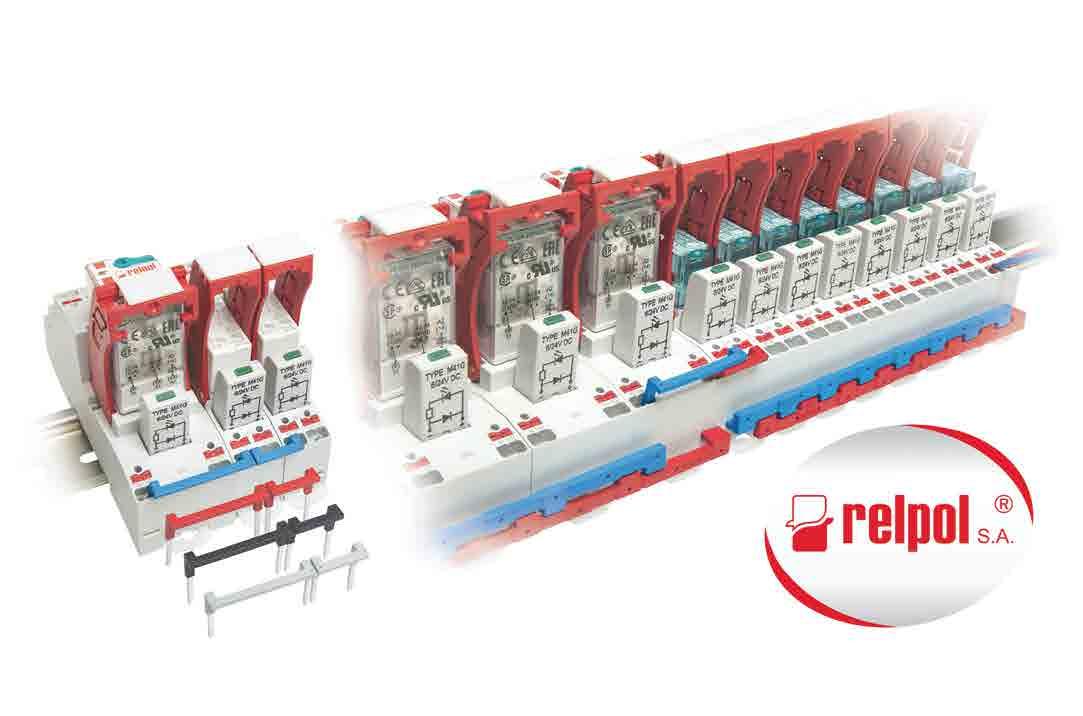
The history of RELPOL. What are the origins of the company?
The company has its beginnings in 1958. On 1st of January 1965 the company became a part of MERA-LUMEL Lubuskie Zakłady Aparatów Elektrycznych. The company became fully independent in July 1982, when the Zakład Przekaźników in Żary started operating. In December 1990, a decision was made to privatise the company. In 1996, as the 55th company in Poland, the company debuted on the Warsaw Stock Exchange. The Relpol brand, known for its design quality, flexibility, and product customisation, proved to be very competitive with Asian manufacturers.

Originally, Relpol S.A. specialised in products for the reconstruction of industry and the energy sector. It mainly manufactured large electromechanical relays, such as the R15 series, which is still well-known to many engineers.
What is the secret of the company’s success in summing up its experience and activity on the market?
The basic factor in Relpol S.A.’s success is its flexibility in relation to business partners, the availability of our products to a wide group of recipients through the distribution market, a solid European brand
built up over many years of quality and reliability on the Polish and European markets, as well as the technical and technological knowledge, experience and commitment of its employees.
However, an important role in the business success of Relpol S.A. is played by the range of products on offer, as relays intended for the power and industrial automation sectors formed the basis of the company’s offer.
What is the current position of RELPOL S.A. on the domestic and European markets?
We supply our products to many foreign markets (more than 50 countries). 70% of our turnover is export, the majority of which is in Europe. While we sell domestically through local distributors and reach out directly to OEM customers, in the case of exports our strategic partners and distributors are key. Our annual sales are approximately 31.3 million Euros (2023), with more than 90% of our turnover achieved in Europe. In particular, we sell on the German market, which accounts for 39% of our revenue, and in Poland, where the proportion of total turnover is 32%.
CONSUMER GOODS
The business environment is currently uncertain. What tools are necessary to maintain business stability?
It should be remembered that one of the strategic entities for the capital group is the factory in Ukraine, which has already reached almost full production capacity from the start of the war until today. Nevertheless, the situation is very dynamic and, given the military activities, this may change at any time. On this basis, decisions are taken to minimise the impact of negative factors and to safeguard the company against these risks in the future. One example is the construction of a twin machine park at the factory in Poland, which is currently being used at the plant in Ukraine.

This is to safeguard the continuity of the production process against a possible escalation of the conflict, which could halt the operations of the Ukrainian factory.
What investments increasing the company’s production capacity and competitiveness has RELPOL made in recent months?
The ongoing major investment of a production line for industrial bistable relays is scheduled for completion in 2024. We consider this project to be very innovative, as none of our competitors has such a product on offer. The task of this product in practice will be
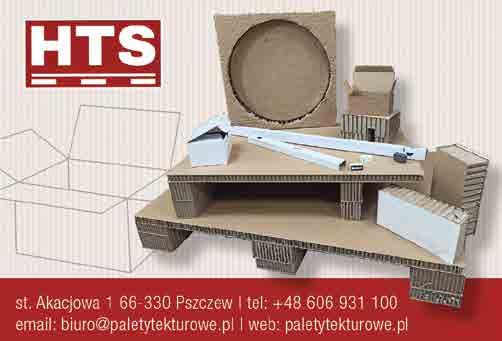
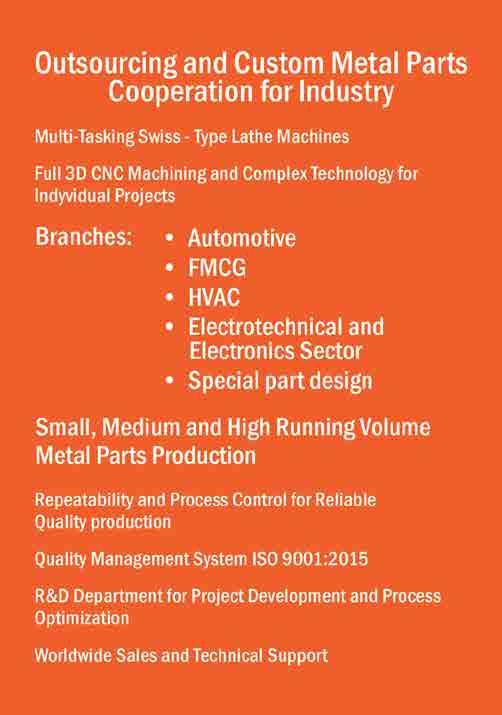
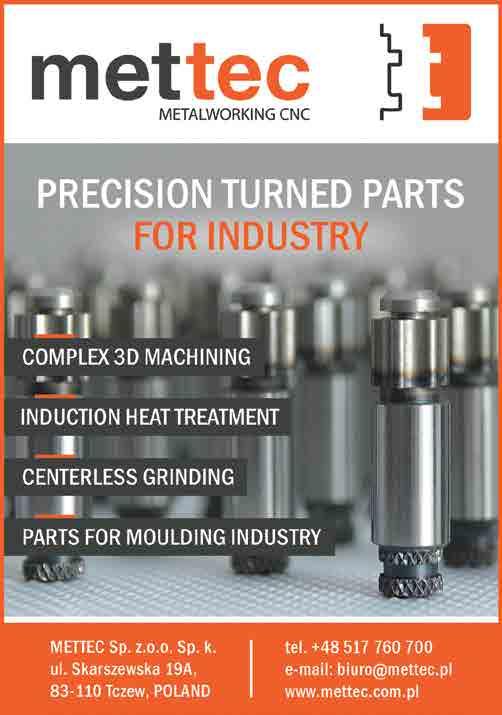
18 Industry Europe
to reduce the electricity consumed in the supply of power switchgear and control cabinets in industrial automation processes. This is a large project worth more than 31 million PLN, thanks to which we will be ready at the end of 2023 with the new product and the entire process of its automatic production. There is also an interesting project in progress for a critical rail infrastructure relay, which is currently in the design phase. This is also a funded project with a total value of nearly 8 million PLN.
What factors distinguish RELPOL’s offering from its competitors?
By focusing on quality, completeness of assortment, as well as flexibility of production itself, Relpol SA strives to create a competitive advantage in relation to the largest companies on the market, where gigantic amounts of money are invested in production automation. With a much smaller production scale, Relpol is a recognisable European brand. Production processes are based on the best materials supplied by European suppliers, which, together with the flexibility of customer service, allows us to remain competitive. We plan to open up new sales prospects in the future in markets where our share has so far been very small, with the USA being one example.
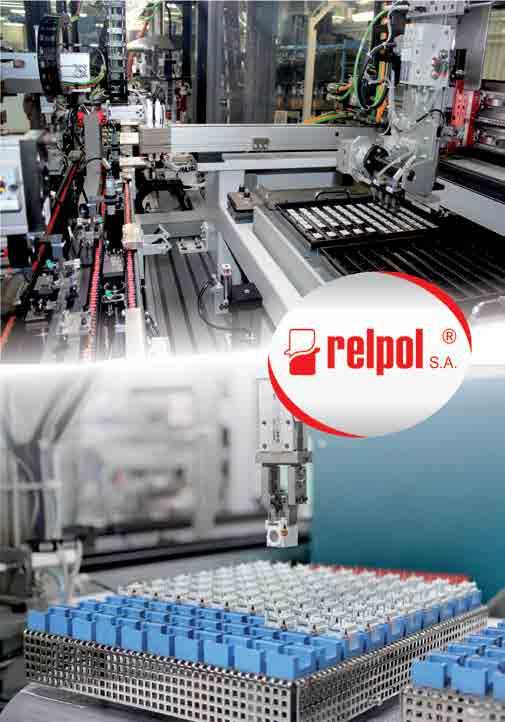
What is the selection of the right raw material (relays) and how does their manufacturing process work?
Relpol SA employs over 50 engineers, about 20 of whom work in R&D departments. The accumulated constructional and technological knowledge allows us not only to create new product groups and continuously improve the current ones, but also to flexibly adapt
products to emerging needs. The company has its own test laboratory, where a few tests are carried out with the products. We test mechanical cycles, shock, and vibration resistance, check electrical parameters and the impact of environmental parameters through the use of climate chambers.
The most important to the manufacturing process is the selection of the right raw materials, which must pass several tests during the production validation process before they can be used. Only positive results allow a given raw material to be used in production. Relpol S.A.’s production process consists of several stages, which are always completed with a 100% test of semi-products or already finished products. It should be noted that each product is subjected to 100% quality control in terms of electrical and mechanical parameters.

What is the company’s current strategy and, above all, for the next few years?
A long-term strategy was designed for Relpol S.A. in the previous year. The objectives set in this strategy are based on investments in building bigger production capacity and market expansion (mainly export) to take advantage of production opportunities. Expansion of the machinery park and investments in new production technologies are an ongoing process resulting from the company’s outlined plans. However, the company’s commercial offer will also develop goods that will complement electromechanical relays in practical applications.
The company’s management is also focusing on building employee awareness of the challenges the company faces. This is aimed at awakening the initiative for ideas and actions that will help the company to overcome adversity.
Industry Europe 19 CONSUMER GOODS
Exports - what share does it have in the company’s production/sales, as well as the main export markets.
Foreign markets for Relpol S.A. account for the largest percentage share of the company’s revenues - approximately 70%. Currently, the company is experiencing sales growth in this channel, however, the key challenge is to cover the complete suspension of sales in the markets of Russia and Belarus. Significant growth is being generated in other territories, mainly in Germany, where the key markets are energy, renewables and the booming electromobility industry. The plan for the coming years in export sales will be to continue market expansion in the area of new countries and new industries.
How many people are employed by RELPOL S.A. and what profit/turnover the company generated in 2021/2022?
There are two factories in the Relpol S.A capital group - in Żary (Poland), where approximately 500 people work, and in Ukraine, where more than 306 people are employed. Relpol generated
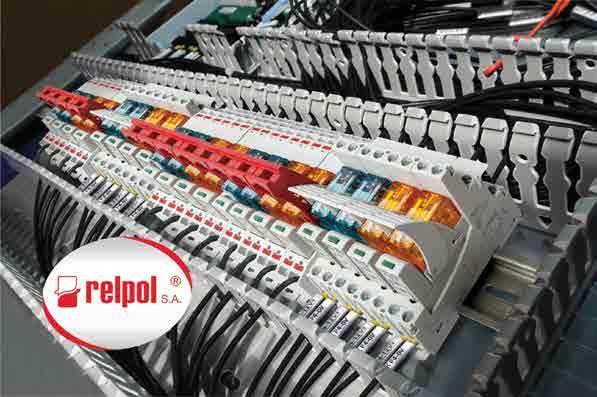
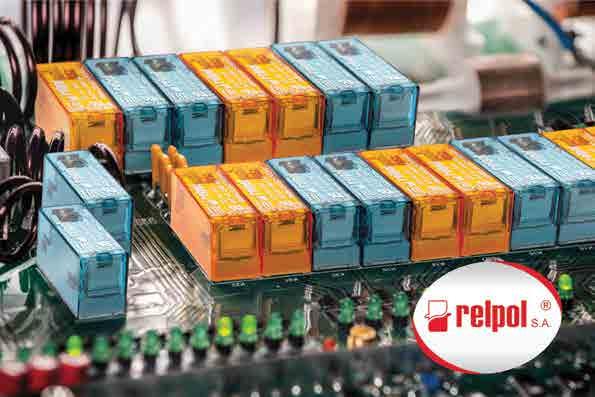
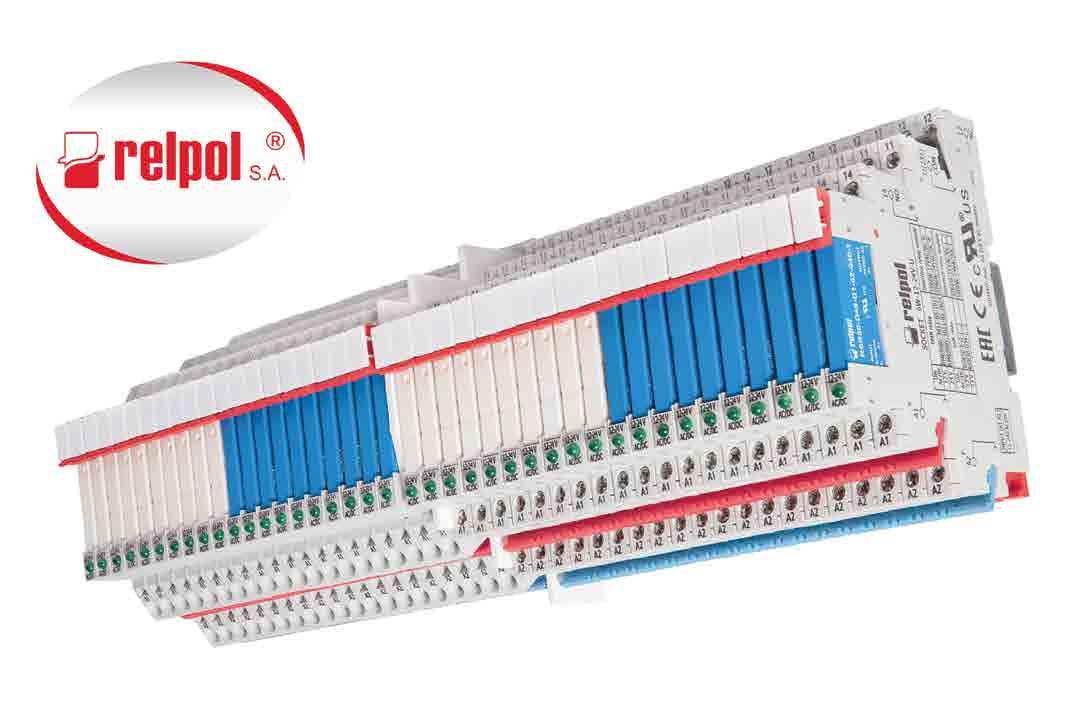
146.5 million PLN in sales revenue in 2022, an increase of 14% compared to 2021, with sales to the domestic market increasing by 18% and exports by 12%.
What are the company’s vision and mission for the coming years?
The budget plans for the coming year include several key operational activities, such as process optimisation in all areas of the company to reduce costs of electricity and heat consumption, monitoring of the situation at the production plant in Ukraine, implementation of investment schedules and active commercial activities to acquire new projects to cover production capacity. In the coming year, new product series launches are planned, such as a new series of modular contactors, which will be broader than the current one with additional configurations and a wider range of switching capacities. Our most important priority objective in the design and technology strategy is to search for market niches where the need for specialised electromagnetic relays is expected to grow rapidly in the coming years. These areas should also be specific enough that our competitors will not be interested in them.
For more information, visit: www.relpol.pl/en
CONSUMER GOODS
n
20 Industry Europe

INDUSTRYEUROPE.COM INDUSTRYEUROPE.COM
LA MARE: HOUSING ON THE WATER LA MARE: HOUSING ON THE WATER
La Mare, a company from Bydgoszcz, Poland, is a manufacturer of houseboats. Its mission is to provide customers with top-class, tailor-made solutions, which ensure full safety and the highest comfort. Mr. Witold Witkowski, the La Mare’s CEO, speaks with Industry Europe.

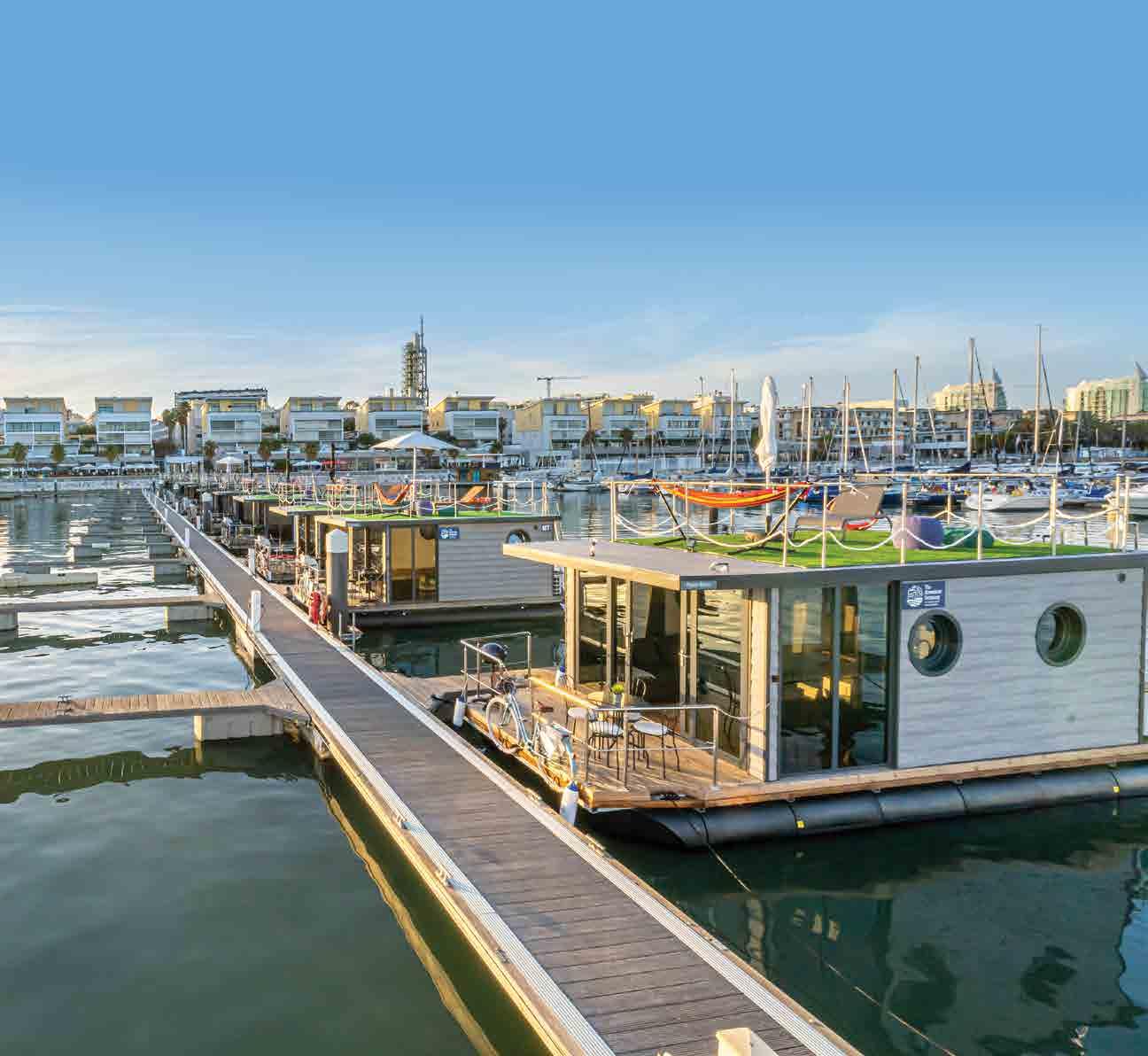
What are the origins of La Mare, the company with a history that goes back to 2010?
In its current form the La Mare’s operations started 13 years ago. Initially, before 2010, we were making steamboats powered by wood briquettes. Unfortunately, they were not very popular, and we soon would realise that the age of steam was over. So, we looked for another idea related to water. I managed to observe a certain niche: houseboats, in other words - houses on the water. At that time, there were no luxurious or elegant units in this segment of the market, houseboats were very simple: no comforts, no electricity, no water connection. So, I decided to create a kind of fashion for the houseboating in Europe. Mobile houses are very popular, so why not to promote floating houses? I really wanted to breathe the spirit into this idea. Now I can say with complete confidence that we have succeeded.
What is the La Mare’s current position on the market?
We are absolute no. 1 producer of houseboats in Europe. Comparing to our competitors our annual production is two times bigger. We have all the necessary certificates such as ISO 9001/2015; we employ more than 30 employees and cooperate with hundreds of companies and subcontractors. Currently, we manufacture more than 100 units a year and sell it on all major European markets, actually to all the EU countries. The exports account for 95 per cent of our total sales, with Germany, the UK, the Netherlands, Portugal and Scandinavian countries being our most important markets. The company’s annual sales exceeded in 2021 to PLN 41 million (EUR 9 million); in 2022 they were more than PLN 47 million (EUR 10.2 million).
Which houseboat model is the most popular in Poland and among foreign customers? Are there any differences?
22 Industry Europe
Witold Witkowski - CEO LaMare
The customers’ preferences are rather similar. I would rather divide it into the floating units (with engines) and stationary units. The interest is divided half and half and it depends on individual regulations in different countries. For example, in the UK a vessel such as houseboat cannot have an engine and can’t sail, as the local canals are too small, and the bridges are too low. However, there are favourable tax conditions for living on the water, so many people buy our products as stationary houseboats. At that time, they were a complete novelty in the UK, since the traditional narrow, metal barges had the apartments partially submerged under the line of water. It means that a lot of moisture enters there, which translates into bad smell of the interior and interfere with the comfort of staying in it. This made our houseboats a great hit, people.
live in them even all year around, since they are dry, warm and cosy. I know marinas with more than 20 of our vessels.
The situation in Germany is completely different. There is a need for houseboats with engine, mainly in the vicinity of Berlin. Houseboat charters start in late March, and customers sail usually for 3-7 days. The unit must therefore be energized and existential independent to enable the client live there with no need to any external utilities.


What is behind of the company’s success on the market?
The first and most important thing is to have an idea, then to observe a niche and launch a product. People are the other matter, in two respects. Firstly, the invaluable contribution of our dealers. On their shoulders is to sell our units. We have an extensive dealer network, with more than 10 dealers in Europe. Secondly, the people in the plant, i.e., our employees who perfectly learned the houseboats manufacturing and do it well. Our crew is constant, we rarely say goodbye to anyone. We care about a good working atmosphere.
Observing the market and adapting to the customer’s needs is another factor contributed to our market success. We are open to any proposed solutions and suggestions. Colloquially speaking, we try to fulfil all the customers’ whims. Maybe it slows us down a bit, because there is no longer a serial production, but a search for the best solutions to meet the client’s needs is worth it.
Of course, stubbornness and faith in your vision are also important. The promotion of the La Mare brand, which take place mainly at European fairs, brought us a great success.
Industry Europe 23
CONSUMER GOODS
Which fairs are the most important for LaMare?
Definitely BOOT World’s Fair Dusseldorf in Germany, but we also take part in regional fairs. I believe that physical presentation of our houses on the water is also the way to success, as this product is not sold from a catalogue. You have to touch it, to step inside, to feel the atmosphere, to check what impression it makes on you.

The best way is to experience it all on the water. That’s why we offer our customers the option to charter a houseboat to able them literally fall in love with the product. Then, the customers often come to us to buy a houseboat for private or investment purposes, as purchasing a houseboat is also a great investment. It pays off much faster than any real estate, in 4-5 years. It has the advantage over yachts that are dedicated only to the summer

period, two or three months. The season for houseboats lasts the whole year, as our units are fully prepared for winter conditions: they are insulated, have heating, and double glazing.


What distinguishes La Mare’s offer from its competition?
When we started our business, there was a little competition, mainly in Germany. Currently, Poland’s companies are our main competitors. They have, like us, a very attractive price offer. However, an attractive price is not everything for us. A very good quality of the product is a must, and we offer it; we combine a good price with a great quality. The rightness of this direction is confirmed by the fact that our products are often copied. Even recently we have won a court case for infringement of our intellectual property.
24 Industry Europe
La Mare is constantly developing, working on new models, expanding its offer, which also increases our competitiveness. We provide a 2-year service throughout Europe.
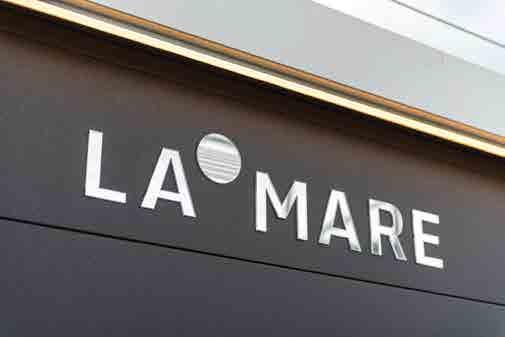
How long does the production process take?
It takes about 3 months. We are able to produce about 20 houseboats at one time, monthly appr. seven units. For a client the waiting period is from four to six months, since before the production starts, the time is needed for ordering all the necessary components.
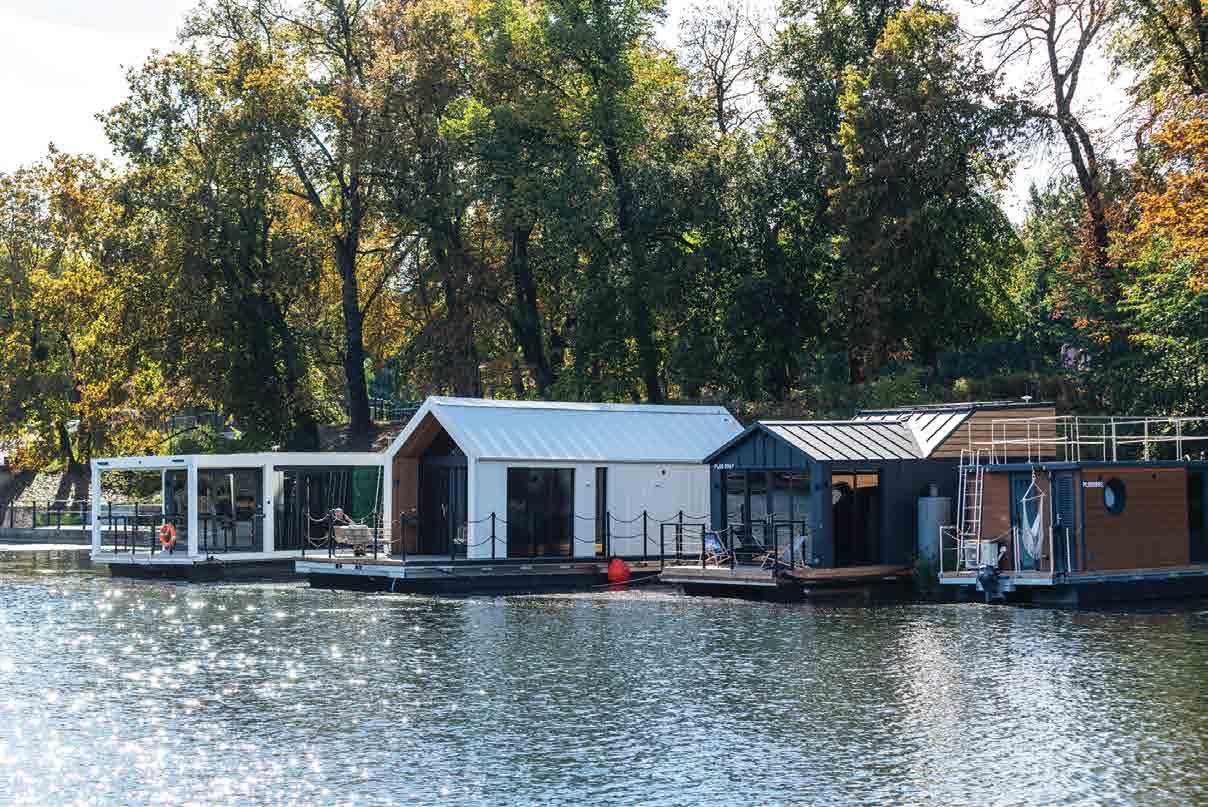
Have you made recently any investments to increase the company’s production capacity and its competitiveness?
For the last four years, our annual production has increased more than 100 per cent. Hardly any company is able to get out of it unscathed, to cope with the excess of orders. Fortunately, we made it. Three years ago, I introduced the company’s branches in various towns, where we organized the production. From 2023 we have been developing and expanding the production in the parent company, in Bydgoszcz. Even as we speak, an additional hall of 1000m2 is growing, which is due to open in July this year. We have also permission to build another hall, 600m2, and a port with a crane, partially subsidized from Norwegian funds.
We are near the production of a unit completely independent of external media, external energy sources and municipal connections. So far, waste has been pumped to an external network, and we came up with an in-built sewage treatment, which is powered by five stationary houseboats. Now we are working on a treatment microplant that would be installed individually for a given unit.
We are also in a process to invent river/lake water filters so that you do not have to connect to the municipal network. It is also worth
mentioning that we are the only company in the world to start the production of floating houses in a metal structure. We are planning to launch a metal module factory, which would give us the opportunity to produce land houses.
What is your vision of the company’s further development?
In the next three years, we should like to improve the company’s profit. We need to take full advantage of the new processing capacity that will appear on the occasion of the completion of the two previously mentioned halls. We are also thinking about introducing two-story units or small hotel buildings on water. Our plan includes the enter to two new markets: USA and Middle East. n
Visit: https://lamare.pl
Industry Europe 25 CONSUMER GOODS
New developments in the Consumer Goods
Dematic Delivers Enhanced Processes for Spanish Third-Party Logistics Operator Factor 5
Third-partylogistics operator Factor 5 recently commissioned a goods-to-person solution featuring an AutoStore™ automated storage and picking system provided by intelligent automation solution provider Dematic. The solution enhances its order process for perfumes and cosmetics products with the aim of boosting sales and strengthening its ability to compete in the long term. The solution went live this past March at Factor 5’s Alovera site northeast of Madrid.
Headquartered in Spain’s mid-section in Guadalajara, with 2,000 employees and over 400,000 square meter of warehouse space, Factor 5 is one of Spain’s leading third-party logistics operators.
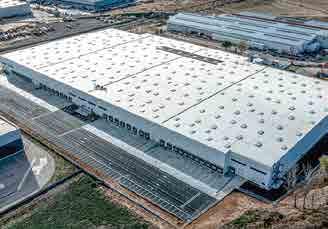
According to Maria de Jesús, the Supply Chain director at Factor 5, Dematic was selected for its flexibility, global reach and reliability. “We wanted an international technology partner who could offer us a selection of solutions that meet the needs of customers looking to transform their supply chains and looking for increasingly efficient and scalable logistics operations to reduce costs and accommodate growth of online
sales. And we wanted a solid service partner who would be there for us to support our own growth projections for the coming years.”
Factor 5 opted for a modular automation solution from Dematic, which features a high-performance storage system that is easily scalable, has very low energy consumption and provides excellent inventory security. The solution significantly reduces the amount of space required for storage and improves order preparation process times. The project got underway in March 2022 and was completed in just under 12 months.
Dematic Software manages and runs the entire automated system. The AutoStore™ automated
storage and picking system includes nearly 4,400 containers for storage and seven R5 robots for collecting and delivering the containers with the requested items to one of five workstations where operators collect the items to complete orders. The goods-to-person concept is anticipated to substantially increase productivity as Factor 5 employees no longer need to cover long distances to collect individual order items.
“Our goal has been twofold with this project. Of course, we wanted to deliver a robust solution to Factor 5 that meets their requirements from top to bottom, but we also wanted to establish a strong relationship with them that provides added value where they view Dematic as a reliable technology partner for the long term”, explains Sonia Bello, Sales Director at Dematic Iberia.
Santiago de Vicente, CEO at Factor 5, states, “We are convinced that the Dematic solution perfectly meets our business needs, and as we face an increasingly complex market, Dematic can provide advanced and structured technology solutions to support our company’s growth and development in the years to come.”
are typically used for volume production. Importantly, they come at a mid-market price point, yet there is no compromise on build quality or functionality.
Leading UK packaging specialist Xact is set to expand into new markets with state-of-the-art, multiformat packaging machines supplied by Spanish packaging technology innovator IRTA Group Packaging under a new partnership to help brands and retailers “future-proof” their packaging processes.
The two businesses, each with over 30 years market experience, have joined forces to bring two new Vertical Form Fill sealing machines (VFFS) to the UK for the first time, both of which are capable of handling different packaging sizes, formats and materials.
The IRTA VX STB DOY is a multiformat bag packaging machine, which can create the five most common, vertical pack shapes: Doy, pillow, envelope, block bottom, plus four and five seals. It can handle up to 100 bags per minute and is adaptable to any product type, making it perfect for contract packers who need the ability to switch rapidly between products and packaging types.
The IRTA TR is a hygienic, vertical multiformat unit particularly developed with frozen food in mind. Handling up to 150 packs per minute and 100% washable, it is perfect for everything from frozen fruit and vegetables to meat and fish.
Both machines boast low energy consumption, teamed with high efficiency and multi-functionality, including the ability to work with different packaging materials from heat sealable paper to PE and recyclable/recycled materials, while using less material than more common HFFS (Horizontal Form Fill) machines that
Paul Bennion, Xact Director, explains why the new partnership is important and the benefits it will bring to the food industry: “The UK market is increasingly competitive, meaning retailers have ever-changing demands in terms of products and packaging formats. The two new IRTA machines offer extensive functionality and flexibility to help businesses future-proof packaging production to meet those requirements.
“Xact has been the leader in net packaging for the fresh produce market for the past 30 years and these two innovative packaging machines not only allow us to expand, but also meet the diverse needs of businesses catering to very different requirements from their customers.
“We’re looking particularly to the nuts, dried fruit and snacks market, frozen food and contract packaging companies that need the ability to easily switch between product lines. Our partnership with IRTA to supply these two new machines, enables us to do that.”
Raquel Hidalgo, IRTA Group Packaging’s International Sales and Distributor Networking Manager, adds: “IRTA is going through an ambitious expansion process. We have supplied different machines in the past to the UK for the ice industry and now we need to consolidate our presence in the UK food industry. To do that we wanted to partner with a reputable UK company with good market knowledge, which is why we chose Xact.
“Both our VFFS machines and packaging solutions are an excellent fit with Xact’s profile…and will enable us to build a strong brand name in the UK food industry.”
26 Industry Europe
NEWS
Packaging experts unite to offer “future-proof” flexibility, affordability and multi-functionality to meet the diverse demands of the industry
MBEAUTYSTREAMS complement quantitative analyses New feature available

BASF partners with BEAUTYSTREAMS to further expand its D’lite digital service for the personal care industry
BASF Personal Care continues to expand its digital subscription service D’lite with a new partnership. BEAUTYSTREAMS, the first global beauty industry reference, will provide its expert industry insider perspective in brief monthly trend reports. By highlighting and translating current trends in personal care, BEAUTYSTREAMS offers valuable insights to stay abreast of the rapidly changing market dynamics. The reports will be available in the Concept Collection section of D’lite and will be available to all registered users.
INDUSTRYNEWS
Thanks to leading external partners, BASF’s digital service already features a wealth of quantitative data on brand and social media analytics, consumer insights, market products, and much more. “We are very excited to be working with BEAUTYSTREAMS because their reports perfectly complement our existing service. They contain qualitative statements about current developments in the market and will inspire our customers in their development of innovative personal care products that strike a chord with consumers,” said Mai Linh Ong, Product Owner D’lite World.
Active on five continents, BEAUTYSTREAMS provides future insights, product forecasts, consumer analyses, and market intelligence to beauty industry insiders worldwide. “We are pleased to share key proprietary insights with D’lite users and to connect the dots between lifestyle shifts and the resulting implications for the beauty industry. It is a great opportunity to highlight how industry expert perspectives are indispensable for making sense of the myriad of quantitative data,” said Michael Nolte, SVP Creative Director at BEAUTYSTREAMS.
BASF’s D’lite ecosystem seamlessly merges multiple real-time data sources from multiple social media pages, blogs, forums, and review sites on more than 3.8 million consumers products and 4,000 brands with the latest BASF product portfolio, concepts and over 3,300 formulations. AI-based product designers such as BASF’s Emollient Maestro and Surfactant Navigator extend the integrated digital service. The platform thus supports customers across the globe throughout the entire product development process: from understanding consumers and the market to concept creation, market strategy, formulation development and the launch of the final product. To date, D’lite has users in more than 100 countries.
D’lite is just one recent example of how the company’s Care Chemicals Division is addressing future challenges. Sustainability, digitalization, innovation and new approaches to working together are the key cornerstones of Care 360°–Solutions for Sustainable Life.

Henkel and Avantium have been partners since 2019, when Henkel joined the PEFerence consortium1 . This consortium of partners, coordinated by Avantium, aims to establish an innovative supply chain for FDCA and PEF (polyethylene furanoate). As part of the PEFerence project, Henkel has tested and positively evaluated the feasibility of FDCA for the use of polyurethane adhesives. Now Henkel has decided to proceed and bring those adhesives to the market for the use in electronics applications, such as consumer devices.
For many years, Henkel has been committed to sustainable business practices. As a market leader for adhesives, sealants and functional coatings, Henkel is making an important contribution to climate protection by embracing innovative solutions that facilitate recycling and enable CO2 savings
across the value chain. “Henkel is constantly innovating high-quality and sustainable adhesives to support our customers and ecosystem partners in their implementation of a circular economy. Avantium’s 100% plant-based FDCA enhances our strategy to incorporate renewable carbon into our technology roadmap while offering improved perfor mance in our products. We look forward to continue working with Avantium in the years to come. For us, this is just the start as we see high potential for FDCA in application areas beyond electronics, such as packaging, wood construction or textile lamina tion”, says Adrian Brandt, Head of Bio-Renewable materials team at Henkel Adhesive Technologies. Bineke Posthumus, Director Business Development of Avantium Renewable Polymers , comments: “We are very pleased that yet another partner of the PEFerence consortium
has decided to sign an offtake agreement with Avantium. One of the benefits working with such diverse group of reputable companies within the PEFerence consortium is that it enables us to create new applications for FDCA and PEF. The decision of Henkel to use FDCA for polyurethane adhesives for use in electronics applications is a great example of the possibility to use our high-
Industry Europe 27
NEWS
CONSUMER GOODS
BASF partners with BEAUTYSTREAMS to further expand its D’lite digital service for the personal care industry
Avantium and Henkel sign offtake agreement on FDCA for adhesives to be used in electronics applications
New developments in Energy & Utilities
H2-Industries and Green Planet sign landmark Waste-to-Hydrogen feedstock deal during COP 27

GreenPlanet for Sustainable Environmental Solutions., an Egyptian company (S.A.E.) that specializes in the Environmental aspects, with a special emphasis on waste management systems, signed a memorandum of understand ing (MOU) with H2-Industries Inc. to provide the necessary feedstock comprising organic and non-recyclable plastic waste for the new Wasteto-Hydrogen plant at East Port Said/ Suez Canal Economic Zone, Egypt.
Signed by Mohamed Assad, Chairman of Green Plant for Sustainable Environmental Solutions, and Michael Stusch, Executive Chairman and CEO of H2-Industries Inc., the MOU is important as the new Waste-to-Hydrogen plant will need a constant supply of organic and non-recyclable plastic feedstock in order to produce the targeted 300,000 tons of clean hydrogen per year.
This MOU will enable the revolutionary new Waste-to-Hydrogen plant at East Port Said to operate producing clean hydrogen while significantly reduce plastic waste, a problem that is global in nature and a topic that is to be discussed at COP27.
Spanish
generation has more than tripled, reflecting a similar rise in plastic production. Today, we produce about 400 million tonnes of plastic waste every year, and this is forecasted to reach 1,100 million tonnes by 2050. Of the seven billion tonnes of plastic waste generated globally so far, less than 10 percent has been recycled.
In many countries, the infrastructure does not exist or is not sufficiently robust to guarantee waste collection, and therefore supplying a constant supply of feedstock is a challenge. Green Planet has undertaken to provide the necessary feedstock - up
energy giant Iberdrola has sold off a 49% stake in its first operational offshore wind farm in Germany, the Wikinger offshore wind farm.
Swiss-based energy investor Energy Infrastructure Partners (EIP) bought the stake for €700 million. Iberdrola will remain the majority 51% shareholder.
According to the agreement, Wikinger’s total valuation amounts to approximately €1.425 billion. Iberdrola will continue to control and manage the asset, leading the operations and maintenance services.
EIP is a major Swiss infrastructure investment company focused on the global energy transition, with a track record as a long-term shareholder in the industry and experience in infrastructure and renewable technology.
Iberdrola, chaired by Ignacio Galan, is a major global player in offshore wind power. Wikinger is one of the company’s flagship operational projects and was the first offshore wind farm developed by the group on its own. With an installed capacity of 350 megawatts (MW) it has been supplying clean energy to approximately 350,000 German households since it was commissioned in 2018.
The transaction further advances Iberdrola`s asset rotation plan to finance new renewable projects under development.
Iberdrola had almost 1,300 MW of offshore wind capacity in operation by the end of June 2022. In addition, it has 3,000 MW under construction, another 4,000 MW secured and an extensive project pipeline under development.
Elsewhere, the group has two offshore wind farms in operation: West of Duddon Sands and East Anglia One commissioned in 2017 and 2020 respectively and located in the UK.

to 4 million tons of waste annually and, as such, will be developing a full supply chain in addition to managing a pre-treatment facility. Establishing a robust supply chain will enable the new Waste-to-Hydrogen plant to operate at capacity and, in doing so, will solve two common problems. These are the environmentally friendly disposal of waste, especially plastic waste, and the creation of generation capacity for clean energy in the form of CO2-emission-free hydrogen challenges that many countries face today.
Michael Stusch said, “This is just the first of several international projects where governments and responsible authorities around the globe realize that organic waste and especially plastic waste if treated correctly, can be a valuable asset and used to generate significant amounts of clean hydrogen”.
“The infrastructure that Green Planet will develop, and the feedstock it will provide as part of this landmark project, is truly a technology enabler accelerating energy transition in Egypt while providing an example to the rest of the world,” said Mohamed Assad.
needs of 1 million homes. In total, Iberdrola has approximately 5,000 MW of offshore wind projects under development in the United States, including Park City Wind with 804 MW and Commonwealth Wind with 1,232 MW.
In Germany, the group has started construction of the 476-MW Baltic Eagle project in the Baltic Sea. Next year, construction will begin on Windanker, which will have a capacity of 308 MW.
These new wind farms will be joined by Saint-Brieuc, in French waters, which is expected to come into operation in 2023. It will have a capacity of 496 MW and will be located off the coast of Brittany, 20 kilometres offshore.
Iberdrola’s global offshore wind pipeline includes a wide range of projects at different stages of development in countries such as the United Kingdom, the United States, Ireland and Sweden, along with an expanding portfolio in countries such as Japan, Taiwan, the Philippines and South Korea.
28 Industry Europe NEWS
Iberdrola
sells 49% of first offshore German wind farm for €700m
Oil & gas exploration shrinks, companies shift to lower-risk assets & regions

less eager to invest in fossil fuel production and instead look ahead to a net zero future.
“Global exploration activity has been on a downward trend in recent years, even before the Covid-19 pandemic and oil market crash, and that looks set to continue this year and beyond. It is clear that oil and gas companies are unwilling to take on the increased risk associated with new exploration or exploration in environmentally or politically sensitive areas,” says Aatisha Mahajan, Rystad Energy’s vice president of upstream analysis.
The decline in leasing activity has resulted in a considerable drop in Russian acreage awards, falling 90% from a year ago to 9,000 square kilometres, while licensed acreage in Africa shrank 70% to just 46,000 square kilometres spread across Angola, Egypt, Morocco and Zimbabwe, the only African countries to award new exploration acreage to date in 2022. On the other hand, new acreage awarded in Asia between January and August nearly quadrupled from the same period last year, while South American awarded acreage surged by 140%.

Gthisyear as the number of licensed blocks and total acreage fall to near all-time lows as the sector struggles to shake off the effects of the Covid-19 pandemic and the ensuing oil market crash, Rystad Energy research shows.
Only 21 lease rounds were completed globally through August this year, half of the 42 rounds held in the first eight months of 2021. The acreage awarded so far this year has shrunk to a 20-year low of 320,000 square kilometres. Global lease rounds are expected to total 44 this year, 14 less than in 2021 and the lowest level since 2000.

Global spending on exploration has been falling in recent years as oil and gas companies seek to limit risk by focusing on core producing assets and regions with guaranteed output, aiming to streamline their operations and build a more resilient business amid market uncertainty and the threat of a recession.
The political landscape is also contributing to the decrease in license awards, with many governments pausing or halting leases and encouraging companies to wrap up exploration activity within already awarded blocks. This trend is likely to continue as governments are
The onshore exploration sector is a significant contributor to the decline in awarded acreage. Total onshore acreage awarded in leasing activity has plummeted from more than 560,000 square kilometres in 2019 to a mere 115,000 square kilometres so far this year. Offshore leased acreage also hit a high point in 2019 before dropping off a cliff in 2020 and has remained relatively flat in the past two years.
Concluded lease rounds have dropped significantly in Russia, the US and Australia this year. These countries have held five lease rounds put together so far this year – three in Russia and one each in the US and Australia –down from 17 rounds in the first eight months of 2021 (eight in Russia, five in the US and four in Australia). The drop in the US is primarily driven by the cancellation of Lease Sales 259 and 261 in the Gulf of Mexico and Cook Inlet in Alaska.
Asian licensing has bucked the trend with increased activity and blocks awarded in Malaysia, Indonesia, India and Pakistan. The global decline in licensing rounds has directly affected the awarded acreage, which has hit an all-time low for the January to August period of about 320,000 square kilometres.
Brazil is the largest contributor in terms of blocks awarded so far this year, with 59 auctioned during its Third Permanent Offer Round. European majors Shell and TotalEnergies took all eight offshore blocks on offer – six and two, respectively. The remaining 51 onshore blocks in the Tucano, Espirito Santo, Potiguar, Reconcavo and Sergipe Alagoas basins went to regional players 3R Petroleum (six blocks), NTF (two), Petro Victory Energy (19), Origem Energia (18), Imetame Energia (three), Petroborn Oleo (two) and CE Engenharia (one).
Other sizeable block awards after Brazil were Norway with 54 new licenses in its APA 2021 round, India with 29 blocks in its OLAP Rounds 6 & 7, and Kazakhstan’s fourth oil and gas auction round, in which 11 blocks were awarded. There was also some sporadic activity in Africa between January and August, with Egypt providing rights to explore in nine blocks and Angola granting two blocks. South America also saw an offshore licensing round in Uruguay, where three exploration blocks were awarded – blocks OFF-2 and OFF-7 to Shell and Block OFF-6 to US independent APA. Challenger Energy signed a 30-year license for OFF-1 through direct negotiation with the government.
Industry Europe 29 NEWS INDUSTRY
NEWS
ENERGY & UTILITIES
Heatwave Havoc: The Rising Tide of Heat-Related Hospitalisations in Europe
exhaustion and heatstroke, which can be fatal if not promptly treated, to exacerbation of chronic conditions like heart and lung diseases.
For instance, during the 2003 heatwave, France witnessed an excess of 15,000 deaths, a significant portion of which resulted from heat-related complications. The pressure on the healthcare system was unprecedented, revealing a lack of preparedness to cope with such climatic extremes.
Moreover, countries in Southern Europe, like Spain and Italy, have reported an increase in emergency hospital admissions related to heatwaves, especially among the elderly. With predictions of more intense and frequent heatwaves due to climate change, this situation is expected to exacerbate, placing additional burden on the already stretched healthcare systems.
Iwave-related
hospitalisations, underscoring the urgent need to address the health implications of climate change. This trend has been attributed to an escalating frequency of severe heatwaves, spurred by global warming, which is exceeding the human body's capacity to adapt.

Heatwaves, characterized by prolonged periods of excessive heat, often accompanied by high humidity, pose an imminent threat to human health. Vulnerable groups, including the elderly, children, pregnant women, and those with pre-existing health conditions such as cardiovascular and respiratory diseases, are particularly at risk.
The impact on healthcare systems across Europe is palpable. In summer months, hospitals often find themselves under immense strain due to the sharp influx of heat-related admissions. These range from heat
Furthermore, the heatwaves can also affect the mental health of individuals, with studies linking increased temperatures to a rise in hospital admissions for mental health issues. This broadens the scope of heatwave-related hospitalisations beyond the commonly considered physical health problems.
To mitigate this crisis, there is a growing need for robust heatwave management plans that include preventive measures such as early warning systems, the provision of cool spaces, and public education about heat-related illnesses. The health sector needs to be adequately equipped and prepared for a future where heatwaves are likely to become a more regular occurrence.
In conclusion, the increasing hospitalisations due to heatwaves in Europe serve as a stark reminder of the urgency to address climate change's health impacts. It underlines the need for European nations to bolster their healthcare systems and develop comprehensive strategies to protect their most vulnerable citizens from the health risks posed by these extreme weather events.
UEA researchers create interactive 4D images of the heart
Runningdiagnostics for patients with heart disease could soon be easier and faster thanks to a new technique developed by scientists that creates interactive 4D flow images of their hearts.
A team of researchers at the University of East Anglia (UEA) used MRI scans to create the images, mixing motion pictures and physical effects - creating a digital model of a heart that can monitor conditions inside the organ.
The render can be completed in around six-to-eight minutes and can monitor blood flow inside the heart accurately and precisely.
The image provides a glimpse of the heart valves and the flow inside the heart in three dimensions, helping doctors determine the best course of treatment for patients.
It was first trialled on 50 cardiology patients in Norfolk and Sheffield, in the hopes that it could revolutionise how heart disease is treated.
“Heart failure is a dreadful condition resulting from rising pressures inside the heart. The best method to diagnose heart failure is by invasive
assessment, which is not preferred as it has risks", said Dr Pankaj Garg, from UEA's Norwich Medical School and the lead author of the study.
“An ultrasound scan of the heart called echocardiography is routinely used to measure the peak velocity of blood flow through the mitral valve of the heart".
He described the methods used in the study as the "cutting-edge" of flow assessment that allows doctors to monitor the heart in "three directions" and "four dimensions".
“We applied automated methods to hunt for the peak velocity in the chamber of the heart and showed that it is similar to echocardiography assessment, but with much greater precision", he added.
Patients with suspected heart failure were assessed using both echocardiography and the new advanced 4D flow heart MRI for the trials.

Some of the software used in the flow imageprimarily the blood flow measure - was developed by Netherlands-based Pie Medical Imaging.
“This work is very important because the heart’s inability to relax leads to a rise in pressures inside the heart, and this causes heart failure with preserved ejection fraction", Dr Garg continued.
“Peak velocity of the blood flow inside the heart is a very important assessment for patients, and our findings show that by using a state-of-the-art 4D flow MRI imaging, we can do this accurately and with a high degree of repeatability.
“This advanced imaging offers an alternative to ultrasound methods and may even be better than ultrasound in the future.”
30 Industry Europe NEWS
in Healthcare
New developments
Optimised motors for wearable Med Tech
TUK. Providing patients with the freedom to live a fulfilling life is an essential part of their healthcare, but can be difficult to balance with regular medical treatment. Here Dave Walsha, sales manager at precision drive system supplier EMS explains how advances in wearable Med Tech are providing patients with freedom and flexibility.
The number of patients referred for NHS outpatient care — treatment that does not require an overnight stay — increased by 42% between 2009 and 2020. Many of these outpatient appointments are for repeated, regular treatments such as dialysis or chemotherapy. If some of these treatments could be received at home, not only would patients receive significant additional freedom, but it would ease some of the pressure faced by an overstretched NHS.
Delivering chemotherapy drugs

According to Cancer Research’s latest figures, of the 363,000 people diagnosed with cancer in the UK each year, 28 per cent are receiving chemotherapy — equating to around 100,000 people per year. Patients receiving chemotherapy drugs via an IV in hospital must spend several hours on ward every week. This can be a huge disruption to an individual’s life and costs relating to travel, hospital parking and other personal expenses can quickly add up. Plus, the stress of dealing with a cancer diagnosis is only amplified by spending so much time in an unfamiliar, clinical environment.
While removing the hospital environment from chemotherapy cannot mitigate the treatment’s side effects, receiving treatment at home may bring
or simply rest, all while receiving treatment.
An ambulatory infusion pump (AIP) is a small, battery-powered pump that can be used to slowly deliver chemotherapy drugs over a period of several days. AIPs are small, allowing the patient to remain mobile during treatment. Typically, ambulatory pumps are controlled by a microprocessor that regulates the infusion flow, and a motor is responsible for consistently delivering drugs at a constant, steady rate.
Insulin pumps
Patients living with life-long health conditions can also benefit from wearable health tech. There are currently approximately 400,000 people living with type 1 diabetes in the UK, who must regularly inject themselves with insulin to prevent their blood sugar from becoming too high or low.

While insulin injections don’t have to be administered in a clinical environment, they are often a huge inconvenience in a person’s life. Frequent injections are uncomfortable and many people dislike having to administer them in a public place. For the 29,000 children in the UK with type 1 diabetes, managing the condition can be particularly difficult.
Insulin pumps offer an alternative to injections. They are small, wearable devices that deliver insulin to the patient’s body through a tube called a cannula. This can be at a constant, set rate, but the pumps are also capable of delivering bolus insulin — an extra dose of fastacting insulin — if required.
Many modern insulin pumps can also communicate with continuous glucose monitors that track the patient’s blood sugar levels. Using this information, a motor will accurately actuate a plunger a specific amount moving insulin from a reservoir and into the tubing to provide fast, reliable and precise insulin delivery.
Drug delivery with accuracy
Whether delivering chemotherapy drugs or insulin, these medical devices must operate with utmost precision, as the smallest deviation from the required dose could have dangerous consequences. EMS is the sole UK and Ireland supplier of FAULHABER motors, which are made in a finely controlled manufacturing process that ensures they perform with high repeatability and reliability.
As the pumps are being worn by patients, they must be absolutely quiet. FAULHABER’s drive technology with cogging-free running ensures that drive-related vibrations or running noises are not noticeable in the device. It also delivers high power in a small space envelope, ideal for keeping the pumps as small and lightweight as possible.
Dealing with a long-term health condition can be detrimental to all aspects of a patient’s life. Infusion pumps ease some of the practical difficulties of receiving regular medical treatment, allowing patients to focus on living their life as normally as possible. When powered by precise, accurate motors, wearable medical technology can transform healthcare.
Industry Europe 31 NEWS INDUSTRYNEWS
- The author, Dave Walsha, is sales manager at precision drive system supplier EMS.
HEALTHCARE
The author, Dave Walsha, is sales manager at precision drive system supplier EMS.
New developments in Metals & Mining
Pacific deep sea mining gets green light, Greenpeace slams decision
Thecontroversial practice of deep-sea mining could begin in the Pacific as soon as this month after the International Seabed Authority (ISA) gave the go-ahead to The Metals Company to commence mining the sea floor.
The ISA granted permission for Metals Company subsidiary, Nauru Oceans Resources Incorporated (NORI) to start exploratory mining in an area between Mexico and Hawai'i known as the Clarion Clipper Zone. The initial mining test phase is scheduled to conclude by the end of the year.
The company hopes it will pave the way for "NORI’s application to the ISA for an exploitation contract" said The Metals Company in a statement.
The trial will see NORI's offshore partner Allseas test a system consisting of a nodule collector on the seabed and a riser system that will bring the nodules to the vessel at the surface, Hidden Gem. The company is anticipating collecting around 3600 tonnes of polymetallic nodules during the trial.
The Metals Company says that both the Allseas systems will be monitored by independ-

ent scientists from a dozen research institutes from around the world, who will analyse the environmental impacts.
The Metals Company CEO and Chairman Gerard Barron welcomed the ISA decision and said that his team had worked tirelessly to achieve the result.
"With this green light from the ISA, the team of world-class engineers from Allseas and scientists from some of the world’s leading deep-sea research institutions that we’ve brought together can begin technology trials and our impact monitoring campaign. We have a couple of exciting and no doubt challenging months ahead of us. The environmental and operational data and insights from these trials will be an important step in ensuring the safe and efficient collection of polymetallic nodules to supply critical battery materials for the clean energy transition,” said Barron.
The decision has been slammed by environmental campaigners, with Greenpeace Aotearoa describing it as the start of a new and highly destructive extractive industry that will prioritise
profit over people and biodiversity, and threaten the ocean's health and people's way of life.
"Deep sea mining is now right upon our doorstep and is a threat to each and every one of us. The ocean is home to over 90% of life on earth and is one of our greatest allies in the fight against climate change. Greenpeace will not stand by quietly as deep-sea mining companies begin to plunder the seafloor and decimate biodiversity for profit," said Greenpeace Aotearoa seabed mining campaigner James Hita. Read more: www.industryeurope.net
SLM Solutions and Danish Technological Institute Collaborate to Revolutionize Metal Additive Manufacturing
Today,SLM Solutions, the leading metal additive manufacturing technology provider, announced a game-changing collaboration with the Danish Technological Institute (DTI) to scale up the industrialization of additive manufacturing. This partnership is set to revolutionize the metal additive manufacturing industry by developing new outstanding parameters for SLM® machines and the NXG XII 600.
With their recently acquired SLM®280 2.0, DTI is developing faster process parameters for stainless steel 316L and copper alloy CuCr1Zr to support cost-effective production, taking advantage of SLM Solutions' importance of open architecture. The material development collaboration will create new application opportunities for advanced components, where electrical and thermal conductivity are crucial, and sturdy components out of stainless steel can be manufactured with lightning-fast processes.
“We are thrilled to be collaborating with DTI on high-productivity solutions for 316L and CuCr1Zr. DTI will follow the SLM Solutions standards of material development and qualification, enabling us to provide material parameters of the same high quality as any other new SLM® material parameter,” said Christoph Wangenheim, Head of Additive Material Products & Development at SLM Solutions.
The partnership between DTI and SLM Solutions is the natural next step in their long-term relationship. “The collaboration with SLM Solutions is extremely interesting for us. With SLM Solutions' expertise in special alloys for additive manufacturing, this collaboration gives us a unique insight into future possibilities,” says Ellen M. J. Hedegaard, Business Manager at DTI.
The development allows the copper alloy CuCr1Zr to be printed in varying layer thicknesses and creates new business cases where AM will be used for advanced components where electrical and thermal conductivity are important. With up to 92 % IACS after heat-treatment, CuCr1Zr still features very high electrical conductivities at up to 300 MPa ultimate tensile strength. SLM Solutions' stainless steel 316L, on the other hand, is an austenitic high-chromium steel with excellent processability on SLM Solutions' additive manufacturing machines. 316L is often used in applications requiring good mechanical properties and excellent corrosion resistance, especially in chloride environments. DTI will develop faster process parameters for stainless steel 316L, enabling the possibilities of printing components at a lower price.
DTI is a leading research and technology institute with over 30 years of experience in additive manufacturing. Their modern facilities in Aarhus offer 3D-printed components in a range of metal and polymer materials, utilizing a wide variety of additive manufacturing technologies to tailor a solution that perfectly fits the customers' needs.
With this ground-breaking partnership between SLM Solutions and DTI, further industrialization and increased use of metal-based additive manufacturing will take a significant leap forward. Industry will get a front-row seat to witness the future of additive manufacturing.
SLM Solutions is a publicly-traded Company headquartered in Germany, with offices in Canada, China, France, India, Italy, Japan, Singapore, South Korea, and the United States. Further information is available on www.slm-solutions.com
32 Industry Europe NEWS
and control system technology for steel mill in France
in terms of thickness tolerances, flatness and surface characteristics via precise process control and equipment lifecycle management.”
“ABB will bring a combined MOM4Metals and RGC/AGC automation solution specific to metals processing to our modernization project at Contrisson,” said Frédéric Geoffroy in charge of process and automation department at ArcelorMittal Construction. “This stands out from standard automation and digital solutions and we are pleased that our needs can be met by one supplier with whom we have a long standing relationship at and beyond this site. ABB successfully revamped the drive of the cold rolling mill previously.”
“For ArcelorMittal Construction France, leader in the field of steel building envelopes, ABB supports us through its business solutions and allows us to offer our customers innovative solutions based on decarbonized and sustainable steel.”
Ain Contrisson, France, as part of a modernization project. The solutions, which include ABB Ability™ Manufacturing Operations Management for metals (MOM4Metals), Roll-Gap (RGC) and Automatic Gauge Control (AGC), will help the world’s largest steel producer to bring productivity to a new level, improve quality and performance.
ABB MOM4Metals product, based on precise data analytics, improves information sharing, production planning, execution, reporting, asset monitoring and operational performance optimization. It is designed for and used in various metal production processes from rolling mills to processing lines delivering clear benefits over generic industry-agnostic MES platforms.
ABB is also modernizing advanced RGC and AGC technologies to reduce thickness deviations and off-gauge length. The project is expected be completed in the first quarter of 2024.
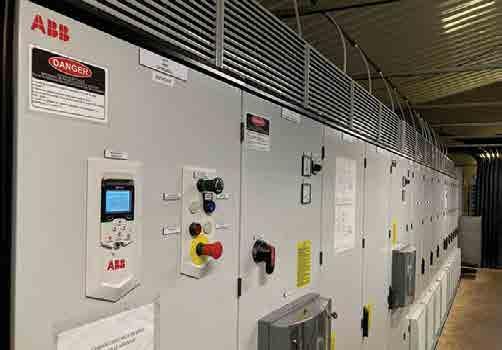
“ArcelorMittal Construction has placed its trust in ABB know-how and solutions for cold mill applications,” said Frederik Esterhuizen, Global Business Line Manager for Metals at ABB. “Through discussions with the customer we have been able to utilize our deep metals expertise to refine the ABB solution to meet their needs. ABB solutions enable cold rolling mills to improve and maintain performance and meet quality requirements
Technology is a decisive factor in determining the quality of rolled products. ABB’s rolling mill solutions, including metals specific electrical, process automation and control technologies, leverage over 100 years of metals industry expertise to enable increased speed, reduced non-rolling time and threading problems while allowing for precise process control in terms of strip surface, flatness, thickness, off-gauge length and more to deliver improved strip quality, productivity and resource efficiency.
ABB’s Process Automation business automates, electrifies and digitalizes industrial operations that address a wide range of essential needs – from supplying energy, water and materials, to producing goods and transporting them to market. With its ~20,000 employees, leading technology and service expertise, ABB Process Automation helps customers in process, hybrid and maritime industries improve performance and safety of operations, enabling a more sustainable and resource-efficient future. go.abb/processautomation
ABB is a technology leader in electrification and automation, enabling a more sustainable and resource-efficient future. The company’s solutions connect engineering know-how and software to optimize how things are manufactured, moved, powered and operated. Building on more than 130 years of excellence, ABB’s ~105,000 employees are committed to driving innovations that accelerate industrial transformation.
Sweden's H2 Green Steel has raised €190 million in its latest round of financing, as its push to replace fossil fuels with green hydrogen in steel production gathers pace.
The company is constructing its first steel mill in the northern Swedish town of Boden, with an aim to produce 5 million tonnes of green steel per year by 2030.
The financing round was co-led by three new investors; Singapore's sovereign wealth fund GIC, Swedish pension fund AMF, and German automotive firm Schaeffler, as well as existing investor Altor Equity.
Also participating in the equity raise is new investor Swedbank Robur Alternative Equity and existing
shareholders Vargas, Kingspan, FAM, Marcegaglia, IMAS Foundation, Cristina Stenbeck and Daniel Ek continue to support the company with additional equity funding.
"This financing milestone is a real statement of confidence in H2 Green Steel. Despite the uncertainty in global markets, a venture like ours, with both a strong business case and a strong sustainable purpose, is clearly attractive to investors.
"This financing round has allowed us to combine leading industrial companies and global financial institutions, with investors with a strong Swedish participation, creating the investor-base that will set us up for success," said Henrik Henriksson, CEO of H2 Green Steel.
After its launch in February 2021 and the close of its series A equity round in May of the same year, the company received a permissibility permit for its operations in Boden in record time, securing a 14 TWh agreement for renewable electricity and initiating groundworks and construction.
H2 Green Steel has already pre-sold about 60% of its initial volumes, which is a testament to the high demand for decarbonised steel. Customers represent a broad range of sectors including steel service centres, pipe and tube manufacturers, automakers, white goods companies and construction products.
Industry Europe 33
NEWS
INDUSTRYNEWS
ArcelorMittal Construction orders digital
METALS & MINING
Sweden's H2 Green Steel raises €190m in latest financing round
RS Group completes acquisition of Distrelec
RS Group plc (LSE: RS1), a global provider of product and service solutions, announced that it has completed the acquisition of Distrelec B.V. (Distrelec), a high-service, digitalled distributor of industrial and maintenance, repair and operations (MRO) products, for a cash and debt free value of €365m as previously announced on 27 April 2023.
Distrelec serves approximately 180,000 customers across 19 countries, significantly expanding RS’s presence in continental Europe, especially in Germany, Switzerland and Sweden. Headquartered in Manchester, UK, Distrelec has approximately 400 employees and 12 sales offices across Europe. It also operates two distribution centres in Switzerland and the Netherlands and a shared service centre in Latvia.
Distrelec is a complementary business to RS with a comparable product mix and
UK Labour Market

Shrinks by Nearly a
customer-centric focus, plus industry-leading product availability. Similar to RS, two thirds of Distrelec's revenue are from digital channels and the average order value is also comparable to RS. This strong competitive position increases RS’s revenue by c. 40% in DACH (Germany, Austria and Switzerland), c. 80% in Scandinavia, and adds scale in Italy, Benelux and Eastern Europe.
There is a high degree of overlap in the largely European supplier base, and the combined distribution network will improve the customer experience and operational efficiency of both RS and Distrelec. In addition, there will be increased revenue synergies from cross-selling opportunities of RS’s own brand and solutions offer.
Distrelec will be integrated into the Group's EMEA region, overseen by Peter Malpas
Fifth in 2023 as Job Applications
Surge, Signalling
(President EMEA, RS) with key members of Distrelec's management team including Raj Patel (Managing Director) and Ben Scholey (Chief Information Officer).
Simon Pryce, CEO of RS Group, commented: "The acquisition of Distrelec materially strengthens our presence in key European markets. It is a complementary business to RS and has excellent value creation potential with a strong cultural and operational fit. Like RS, Distrelec promotes a high-performance culture with good levels of employee engagement and satisfaction. We look forward to welcoming the Distrelec team to the group and realising the significant value creation potential that comes from bringing RS and Distrelec together.”
RS Group plc is listed on the London Stock Exchange with stock ticker RS1 and in the year ended 31 March 2023 reported revenue of £2,982 million.
an End to the Candidate-Driven Market
sise the stark challenges these industries face and the need for innovative solutions to support their recovery.
While the number of new job postings declined, job applications saw a remarkable rise of 29 per cent in the first half of 2023 compared to last year. The IT & Telecoms sector experienced the highest surge in applications, with a massive increase of 72 per cent, while the Education sector also experienced a rise of 60 per cent.
While some sectors thrived in attracting job applications, others continue to face an uphill battle. The Training sector experienced a notable decline of 34 per cent in applications, followed by the FMCG sector with a decrease of 12 per cent. An indication that more can be done to bridge the gap between job seekers and available opportunities in these sectors.
Researchconducted by Reed.co.uk, one of the UK’s leading jobs and careers sites, has revealed a significant decrease of 17 per cent in job postings during the first half of 2023 compared to the previous year. Over the same period, there has been a steep 29 per cent rise in job applications, suggesting a softening of the UK’s labour market and a potential shift in the balance of power between employers and employees.
The drop in job postings reflects the ongoing economic challenges faced by businesses in the first half of 2023. However, certain sectors have showcased remarkable resilience and growth despite the uncertain landscape. The Motoring & Automotive sector experienced a surge of 63 per cent in job postings, followed closely by the Energy sector with a 47 per cent increase.
Conversely, Reed.co.uk data revealed that the Hospitality and Catering sector experienced a steep decline of 41 per cent in job postings, while the Social Care sector experienced a 39 per cent drop. These figures empha-
As expected, given the ongoing cost-of-living crisis, average salary offering across every sector rose in the first half of 2023 compared to last year. Sectors that saw the greatest rise include the FMCG (20.8 per cent), Charity & Voluntary (14.5 per cent), Manufacturing (10.6 per cent) and Customer Service (10.1 per cent) sectors.
Meanwhile, roles in the Scientific, Financial Services and Human Resource sectors experienced the least YOY growth in average salary offerings — 2.1 per cent, 2.1 per cent and 0.5 per cent respectively. Dragging far below the rate of inflation over that same period.
Northern Ireland emerged as the most resilient according to Reed’s data, with a 3 per cent boost in job postings, potentially a sign of increased business confidence in the aftermath of the Windsor Framework.
All regions in England experienced a decline in job postings ranging from 15-18 per cent, with London itself experiencing the largest drop at 18 per cent.
Notably, North West England and Yorkshire saw a significant boost in job applications – an increase of 34 per cent and 35 per cent, respectively, demonstrating potential growth avenues for businesses wanting to level up.
34 Industry Europe NEWS
New developments in Politics & Economics
The Most Effective Ways To Promote Teamwork In Your Business
Teamwork
is the cornerstone of a successful business. It does, in fact, make the dream work. When employees work together cohesively, productivity increases, morale improves, and innovation thrives. It allows you to keep taking steps forward in a business climate that, even if recession signs look like they're dissipating, seems to be fighting you at every turn. You need everyone firing on all cylinders. However, fostering effective teamwork requires deliberate effort and a supportive environment. This article will explore the most effective ways to promote teamwork in your business. By implementing these strategies, you can create a collaborative culture that enhances overall performance and drives success.
1. Cultivate A Shared Vision And Goals
To promote teamwork, it is crucial to cultivate a shared vision and goals among your employees. Clearly communicate the company's mission, values, and objectives to everyone on the team. Encourage individuals to align their personal goals with the overall vision, creating a sense of purpose and unity. People like to understand what they're working towards because they'll feel like they are part of something bigger than the daily grind. When everyone understands and is committed to a common goal, collaboration becomes natural and cohesive.
2. Foster Open Communication
Open and effective communication is vital for fostering teamwork. Encourage regular and transparent communication channels among team members. Establish an environment where everyone feels comfortable expressing their ideas, concerns, and feedback. You aren't going to benefit from the talent that you've assembled if they don't feel like they can speak up. Use tools like team meetings, email, chat platforms, and project management software to facilitate seamless communication and collaboration. However, make sure that you're not scheduling so many meetings that you're eating into essential work time.
3. Encourage Collaboration And Cooperation
Create opportunities for collaboration and cooperation within your business. Assign projects or tasks that require teamwork and diverse skill sets. Encourage employees to work together, share ideas, and support each other's efforts. Foster a culture where individuals recognize the value of collective success
over individual achievements. This can be done through team-building activities, cross-functional projects, or collaborative problem-solving sessions.
4. Promote Trust And Respect
Trust and respect are foundational elements of effective teamwork. Encourage a culture of trust by promoting open dialogue, active listening, and constructive feedback. Recognize and appreciate the contributions of each team member and create an environment where diverse perspectives are valued. Encourage collaboration and discourage blame or finger-pointing. When employees feel trusted and respected, they are more likely to collaborate and work together towards shared goals. It's easy for a work environment to become toxic if trust and respect are lost. You need to spot warning signs early and deal with them.
5. Provide Opportunities For Skill Development
Investing in your team's skill development is essential for promoting teamwork. Offer training and development programs that enhance both technical and soft skills. Provide opportunities for employees to learn from each other through mentoring or cross-training initiatives. When employees feel supported in their professional growth, they become more valuable team members and are better equipped to contribute to the team's success.
6. Use Software To Help Document Sharing
Efficient document sharing is crucial for effective teamwork, especially in today's digital age. Utilize software solutions that facilitate document sharing and collaboration among team members. Cloud-based file storage and project management tools allow employees to access and collaborate on documents in real time, regardless of their location. This improves efficiency, eliminates version control issues, and ensures that everyone is working with the most up-to-date information. It's also important to think about how long it takes for files to transfer. You don't want to keep someone waiting on a vital PDF because the file size is so massive. A PDF compressor will help you to save time and get your files to where they need to go more quickly. Visit Smallpdf to learn how you can compress PDFs without losing any of the quality. They have 21 tools to help you get to grips with your PDFs and simplify your workflow.
7. Create A Collaborative Physical Workspace
The physical workspace plays a significant role in promoting teamwork. Design an office layout that encourages collaboration and interaction. Provide spaces for informal discussions, brainstorming sessions, and team meetings. Consider creating dedicated team areas or project rooms where teams can work together without distractions. A well-designed workspace can facilitate communication, cooperation, and a sense of belonging.
8. Recognize And Reward Teamwork
Recognizing and rewarding teamwork is essential to foster a collaborative culture. Celebrate team achievements and milestones and acknowledge individual contributions within the team context. Implement recognition programs that highlight collaborative efforts and reinforce the importance of teamwork. This can be in the form of verbal praise, performance bonuses, or team-based incentives. There are many reasons why people start to disconnect from work but feeling underappreciated is one of the biggest. When employees see that teamwork is valued and rewarded, they are motivated to continue working together effectively.
9. Encourage Team-Building Activities
Team-building activities play a significant role in fostering teamwork and building strong relationships among team members. Organize team-building events, such as off-site retreats, team lunches, or recreational activities. Your staff can get to know each other on a personal level when they are outside of the work context and free to be themselves. This is how you can start to develop trust and improve communication. Encouraging social connections outside of work strengthens teamwork within the office.
10.
Lead By Example
Leadership sets the tone for teamwork within an organization. As a leader, demonstrate the values and behaviours you expect from your team. Be a role model for collaboration, open communication, and respect. Encourage managers and supervisors to promote teamwork within their respective teams. When leaders prioritize and embody teamwork, it becomes ingrained in the company culture.
Industry Europe 35 NEWS INDUSTRY
NEWS
POLITICS & ECONOMICS
DGT ronik - PCB ASSEMBLY EXPERTS
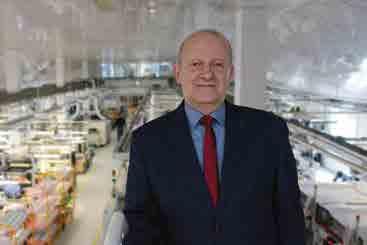

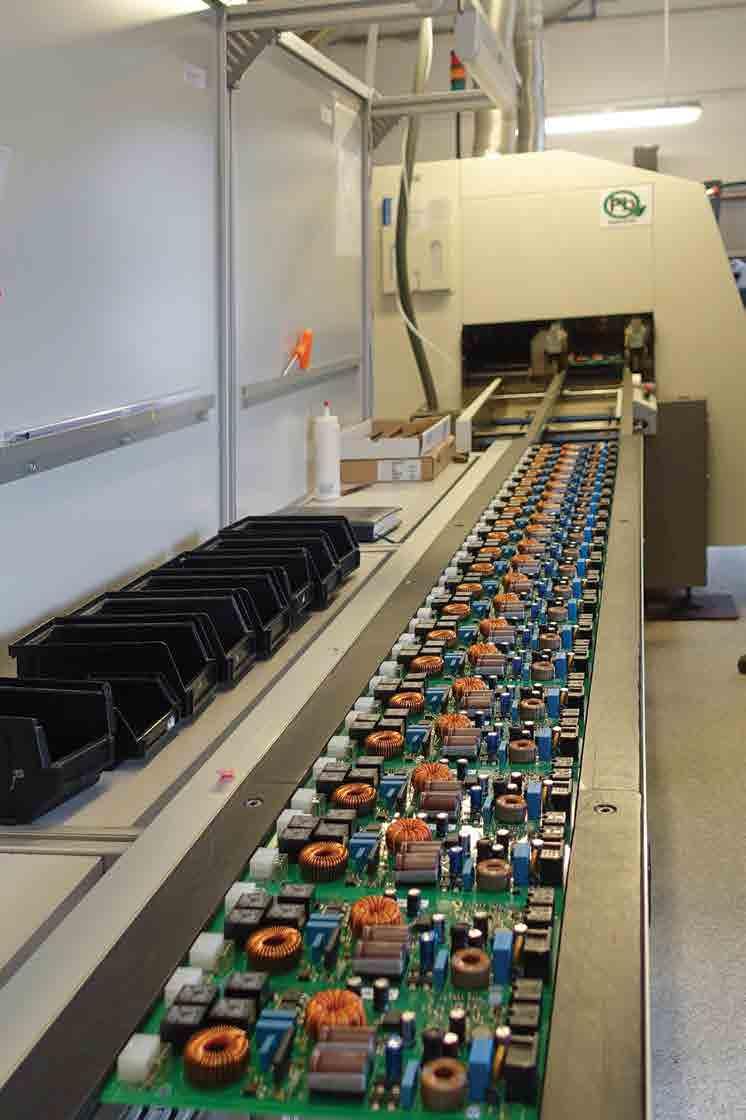
DGTronik, a company from Straszyn near Gdansk, Poland, provides comprehensive electronics assembly solutions. It implements projects involving electronics with densely arranged SMD components in sizes from 01005 and micro BGA. Dariusz Balcerzyk speaks with Mr. Krzysztof Izewski, the founder and long-term CEO, a member of the DGTronik’s Management Board, a company, which is a part of the DGT capital group. At DGT, Mr. Izewski ran for 12 years the company’s Technology Division, including the design office. Currently, he is focused on managing DGTronik.
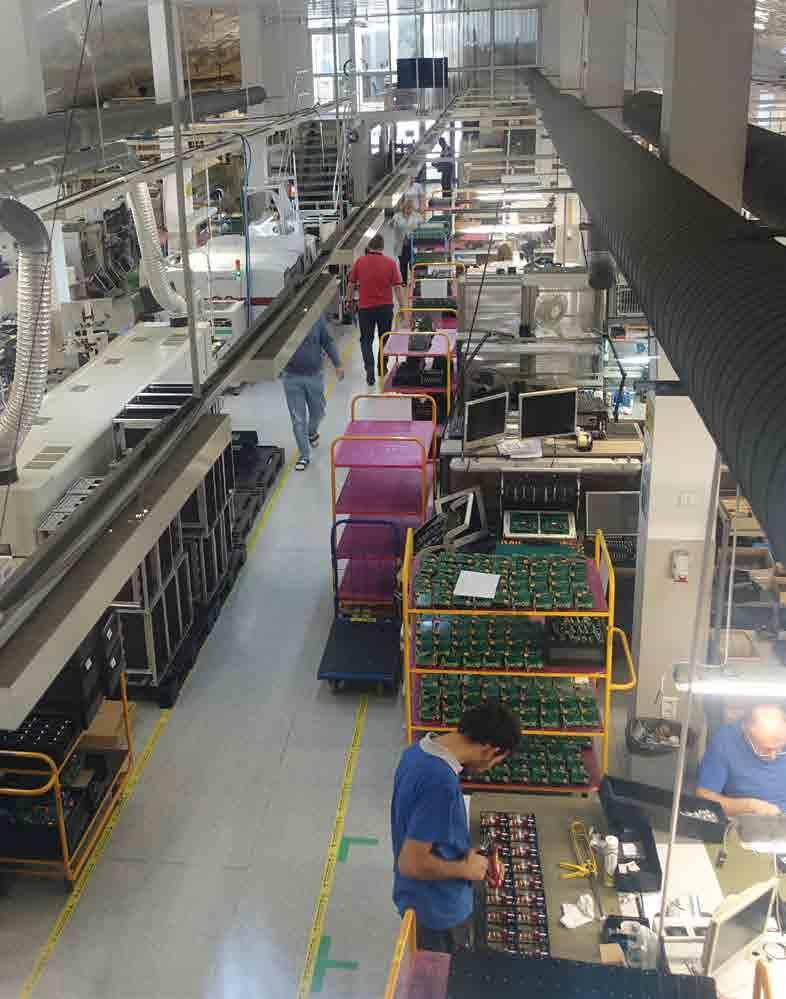 DGTronik CEO, Mr. Krzysztof Izewski
DGTronik CEO, Mr. Krzysztof Izewski
The history of DGTronik dates back to the early 21st century. What are the origins of the company?

DGTronik was established in February 2002 as a result of the transformation of the DGT’s Production Office into a limited liability company. This decision was taken due to the growing potential of the Production Office, which at some point has significantly exceeded the assembly needs of DGT. So we did not start from scratch but already had a great production infrastructure and a very experienced team of specialists, especially in the field of difficult projects. All we needed were customers. Our participation in trade fairs, our attractive prices, especially for foreign companies, our wide offer and sound experience in assembling difficult prototype series made our order portfolio quickly grown.
The DGT, a company, which is an essential part of our capital group and thanks to which we have entered the market, deserves a special mention. The company specialises in the construction and production of integrated communication systems. They were applied, for example, to create systems for handling national emergency numbers ‘112’ and ‘999’ systems in Poland. It was on the DGT products that we learned how to assemble 18-layer PCBs with SMD elements in BGA housings with 1650 leads.
What are the DGTronik’s main areas of activity?
The area of our activity has remained unchanged since the very beginning of the company’s operation and includes contractual electronic assembling supplemented with the commissioning, testing and marking. The assembly applies to packages or entire devices. We also provide additional, outsourced services, e.g. coating, potting or X-ray tests. The assembly service is complemented by the purchase of components and printed circuit boards (PCBs). It is worth mentioning that we can also carry out assembly of electronics for the automotive industry.
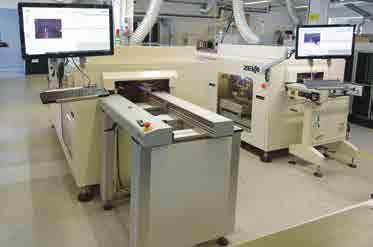
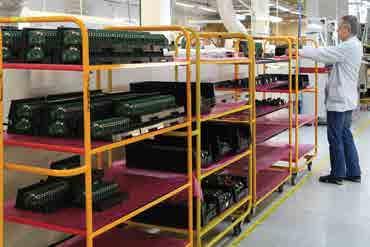
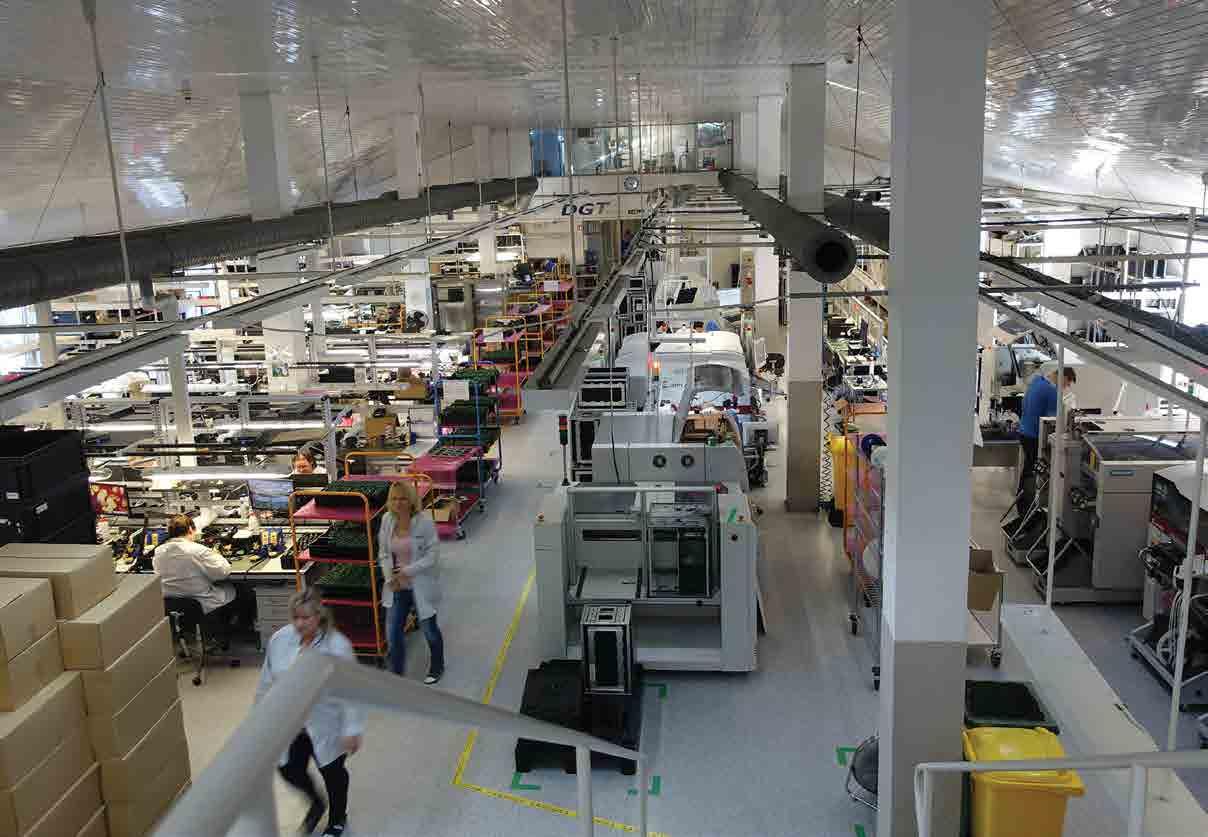

Looking back on past 21 years, what would you consider the secret of the DGTronik market success?
Three elements have determined our continuous presence on the market: being a part of the DGT capital group, taking special care of customer trust and paying the utmost attention to the quality of the services offered. It takes a long time to build a customer trust, while it can be lost very quickly. Therefore, the service timeliness of implementation and its quality are crucial. The last 30 months have been a period of great test for us when it comes to our cooperation with

TECHNOLOGY & INNOVATION

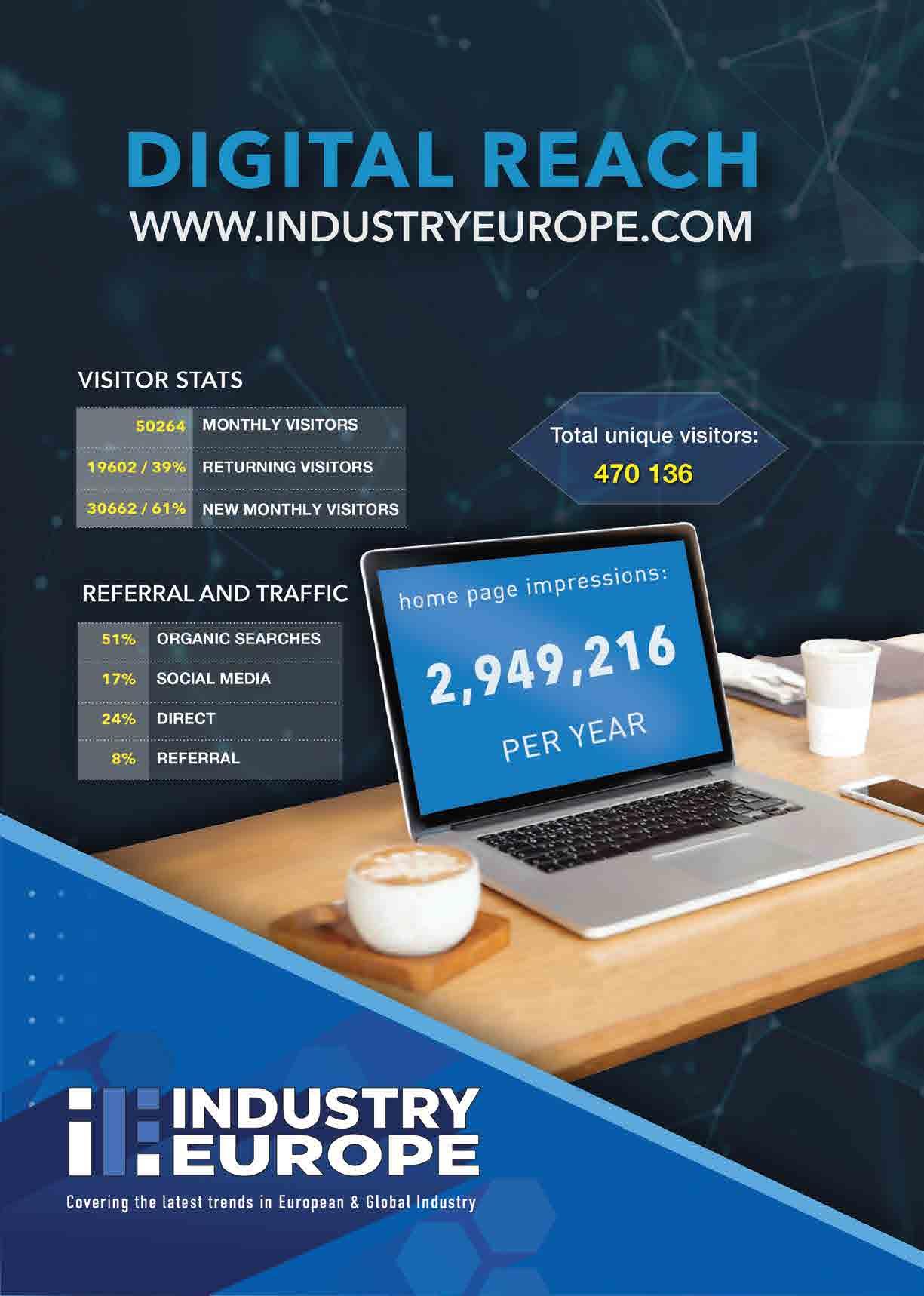
partners. The pandemic has broken supply chains and only close relationship with our clients and their understanding of the situation, allowed us to function.
Our partners value the quality of our services and a very flexible approach to their needs. We are able to cooperate substantively with the client, pointing out technological or design errors and proposing corrections. Our customers greatly admire the pace of modernization of our production base and the pace of adapting the company to new market requirements. Some customers, visiting us after a few years, cannot believe that it is still the same company.
What is the DGTronik current position on the market?
DGTronik holds the rank among the top ten Polish companies.We employ 107 people and our financial turnover in 2022 is estimated as PLN 22 million (EUR 4.7 million). Exports share 80 per cent of the company’s sales. Main foreign destinations are: the USA (36 per cent) and European markets – 44 per cent (including the UK -12 per cent).
Can you explain the process of the electronic component selection? How electronics are tested in the production process?

There are several types of contractual electronic assembly services. It can be assembled from materials provided by the client, or with the purchase of materials by the service provider, or with the purchase of materials by the client and the service provider.
In the case of materials entrusted by the customer, the control is limited to checking the quantity and quality of the elements. The production date and the condition of technological packaging are important. When we buy the materials needed for assembly processes, we rely on supplies from proven and verified suppliers.
In turn, the material list that we receive from the client must contain all the key parameters of the elements for the project.
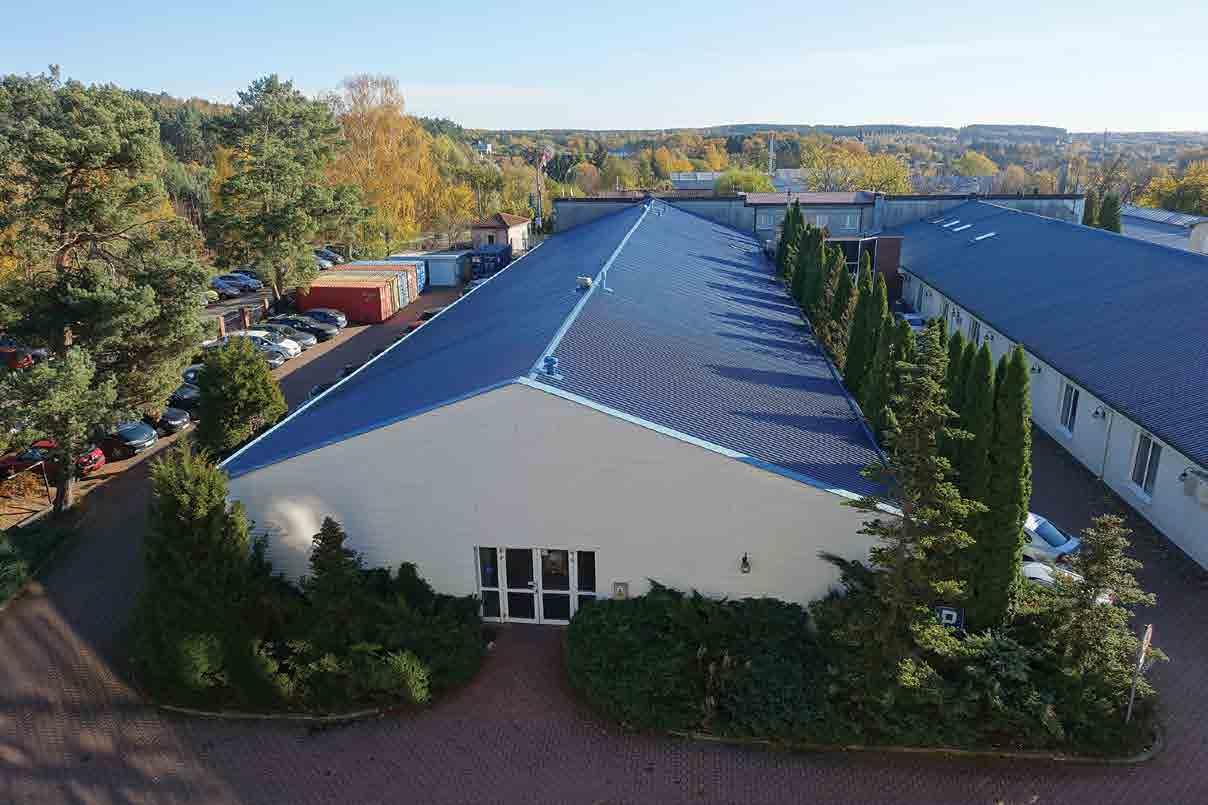
Testing, on the other hand, is a very important competence of a company providing assembly services. If we are commissioned to provide a service for only a PCB package, then the quality control is carried out on SMT assembly lines (automatically, AOI) and TH lines (optical inspection manually) and the final check at the Quality Control Office. If only a PCB package with a test is ordered, in addition to the previously mentioned checks, there is an additional test carried out on the tester and software provided by the customer. And when we are dealing with the assembly of a complete device with start-up and configuration tests, apart from the tests taking place on the SMT and TH assembly lines, there are also package tests, very often on pin testers, and tests of the assembled device. Testers and test software are provided by the customer.
What kind of investments that increase the DGTronik’s production capacity and its competitiveness have been recently implemented?
The last 5 years have been crucial when it comes to modernizing the production infrastructure. We replaced two old SMT assembly lines, replacing them with analogous, but more modern ASMPT SIPLACE machines. We also replaced soldering ovens and paste printers. We paid particular attention to the verification of all elements of the process, which is why each line was equipped with a solder paste controller (SPI) and an automatic optical inspection device (AOI). Solder paste printers received individual air conditioners. We supplemented the through-hole assembly process with two selective waves from Vitronic Soltec Zeva M+. The repeatability of the process carried out by automatic machines is impossible to achieve
in manual operation. This reconstruction of the production base significantly increased our production capacity, while guaranteeing high quality of services.


Furthermore, while looking for a chance to expand our offer with new services, we received an interesting inquiry from our client about the possibilities of laser marking of his products. The client wants to move away from the traditional sticker-type nameplate in favour of laser printing. We are currently testing selected laser markers and integrating them into our IT system. Further development and investments are related to the expansion of the production area that we are planning.

What are the company’s vision andmission for the coming years?
It is a vision of the company providing services at the highest, worldclass level, friendly to employees, effectively protecting them against the harmful effects of certain technological processes and ensuring a friendly working atmosphere. For the sake of our specialists, we do
not want our employees to be present at some particularly onerous parts of the technological process, which is why we are planning automation in this area.
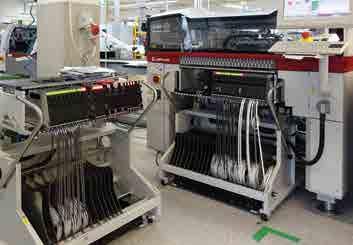

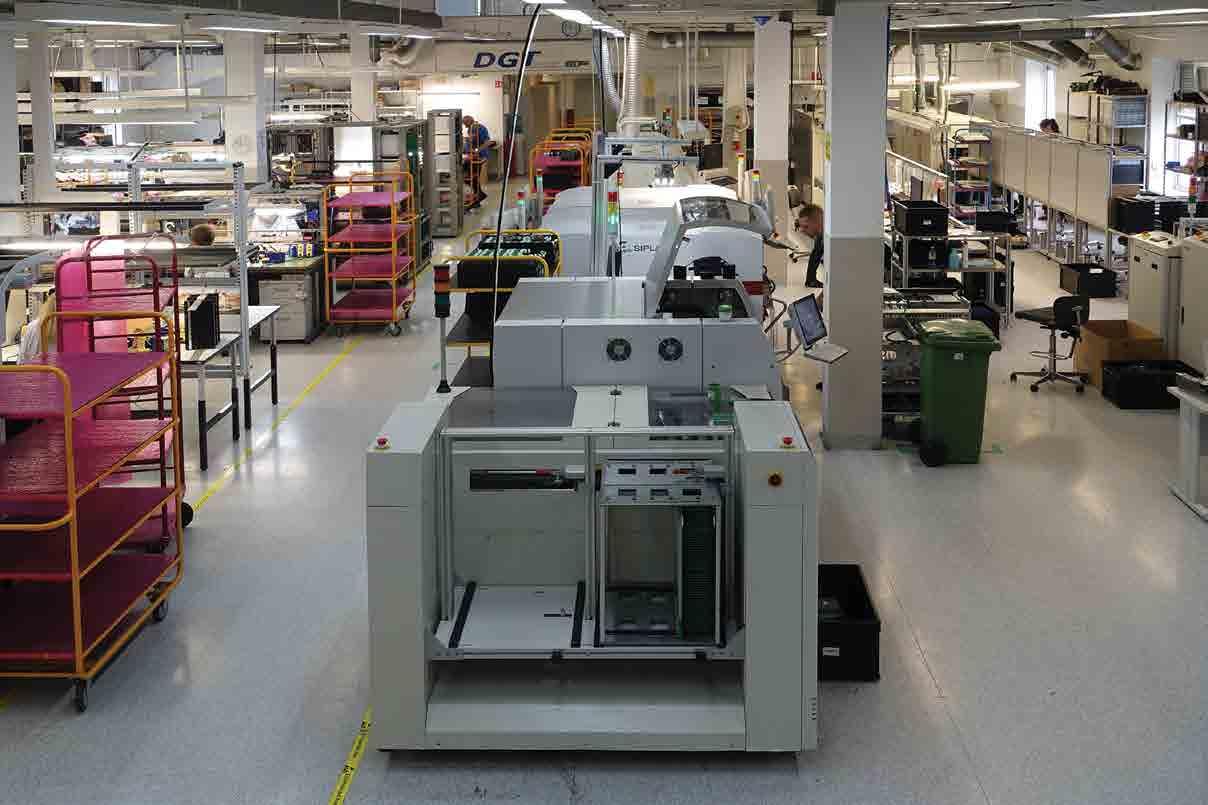
Another important element that fits into the organizational vision and mission is being an environmentally friendly company. The beautiful location of our headquarters is an additional stimulus forcing pro-environmental thinking. We are trying to reduce gradually the carbon footprint of our production cycle and use technological materials with negligible harmfulness to the environment.
Next part is the provision of production capacity for the needs of our capital group, especially for the DGT company, and the successive increase in the value of sales of services for our current customers. They increase their orders striving to locate all their production in one place - at us. We must be ready for such scenarios and secure the necessary production capacity in advance. n Visit
TECHNOLOGY & INNOVATION
DGTronik: https://dgtronik.com.pl
New developments in Technology & Innovation
NEG reduces operational costs with guaranteed energy savings from Siemens
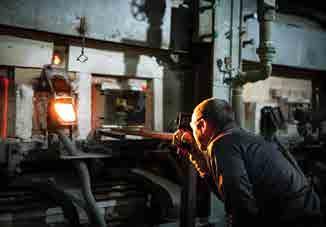
turbine blades but we wanted to level up and invest in improving energy-efficiency at our Wigan site.”
Nippon Electric Glass (NEG) is the world’s leading manufacturer of special glass. The company is dedicated to practicing sustainable manufacturing and wanted to invest in its Wigan facility to become more energy efficient and improve operational efficiencies in incumbent processes and equipment.
Steve Keeton, Managing Director at NEG explains, “For over a decade we’ve been conscious of the requirement for energy efficiency. Not just because we’re such a high energy intensive user and it costs a lot of money but also because of the wider moral and ethical dilemmas around the amount of energy we use ourselves, particularly from carbon sources.”
“So we buy ethically and there’s a nod to circularity because 50% of our product goes into wind
Staffing
The business turned to technology and finance experts from Siemens to analyse factory processes and recommend a strategic approach to enhancing its energy use. After a full assessment of the Wigan facility, Siemens identified key areas where processes and equipment could be implemented to refine efficiency. This included installing new Siemens motors and controllers, new water pumps, flow meters and replacement of nearly 3000 LED light fittings.
Drawing on the expertise of its financing arm – Siemens Financial Services (SFS) – Siemens guaranteed the expected savings over the course of the 5-year contract.
“Typically you’d just do one project at a time and try to justify it on its own merits. That means the smaller more complicated ones are often left on the sidelines. But SFS enabled us to package these altogether into one regular payment.”
“What’s more we didn’t have to start repaying the finance until we’d seen the benefit of the projects. So the benefit was all frontloaded for us. Only when the verified savings came in did we start repaying the lease. We’ve actually managed to achieve more savings than
issues are driving warehouse automation needs, according to 81% of businesses within the manufacturing, 3PL and retail industries.
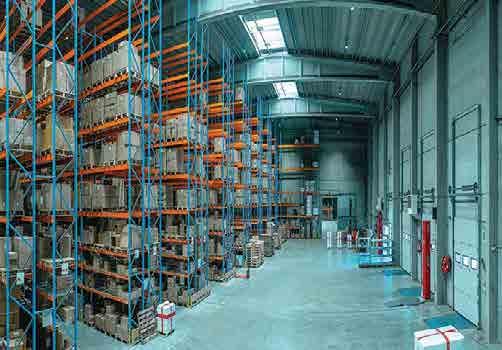
According to the ‘Robotics and Automation report’ from global supply chain and logistics consultancy SCALA, over half of businesses are planning to invest in warehouse innovations to overcome labour shortages and rising e-commerce demands.
Individual case or item picking systems top the list of what organisations’ want to implement in the future with 59% of respondents deeming them as important and 19% considering them highly important.
Full pallet putaway and retrieval automation also scored highly with 60% ranking them as important for the future to cope with high consumer demand.
John Perry, managing director at SCALA, said: “With no end in sight for the skills shortages across the industry, it’s perhaps not surprising that concerns over staff availability topped the list. The ongoing shortages are being exacerbated by rising e-commerce sales, with sales projected to reach $7.4 trillion by 2025.”
“If manufacturers, retailers and 3PLs are to cope with the increasing demands of e-commerce, these ambitions to introduce automation need to be actioned with urgency.
those guaranteed so not only did the team at Siemens exceed expectations but we’ve also been able to bolt-on further projects since.”
Under the energy performance contracting agreement, the end-to-end solution from Siemens spread NEG’s payments over the 5-year term to align with the guaranteed savings, effectively making the investment net zero cost. With the installation of the technology, NEG is now seeing significant reductions in operating costs, totalling around 3 million EUR across the financing period.
“Because the Siemens teams were ideal partners for us, we’ve spun a new project out of this relationship. We are now working on the business case for a digital twin which will help us to identify bottlenecks and other critical areas. It really makes a difference working with people who understand the industry so well and who help make investment in greener processes affordable.”
Carolyn Newsham, Digital Industries Financing Partner, Siemens Financial Services GB&I, “By leveraging the full force of digitalisation and the Siemens family, NEG was able to structure investment around reliable savings estimations. This has not only produced major savings in both financial and energy terms but also paved the way for future projects to continue to reduce its carbon footprint.”
online returns, having a smooth logistics process is a corporate priority.
“This means partly removing the reliance on human labour in warehousing. Robotic and automated systems should be introduced for timeconsuming and labor-intensive tasks, such as item picking and transporting around the warehouse.”
42 Industry Europe NEWS
The need for warehouse automation skyrockets as staffing issues and e-commerce demands grow
ALFED unveil new programmes at EnvironmentAl Strategy Day
ALFEDhas announced its plans to launch two new member initiatives to support the sector’s transition to Net Zero at last week’s inaugural EnvironmentAl Strategy Day. The move will support the supply chain’s knowledge surrounding environmental, social and governance (ESG) and increase wider awareness of aluminium outside of the sector.
An ALFED-accredited ESG officer training programme will provide resources and support representatives from ALFED members in becoming proficient in ESG to support with sustainability transition. While an ‘Aluminium Ambassadors’ initiative, in partnership with Bloodhound Education, will train and equip professionals from across the industry to go into educational and corporate settings to deliver informative talks and run EnvironmentAI trained workshops, designed to spark subject and career interest.
The EnvironmentAl Strategy Day, hosted at BMA House in London, welcomed more than 120 members, guests, Government representatives, industry experts and sustainable solutions suppliers to share insights and discuss the fundamental issues surrounding reaching Net Zero in the aluminium sector. Alongside a keynote address from Lord Rupert Redesdale, the event
hosted a series of panel discussions considering greenshoring, carbon leakage,eliminating and sorting waste.
Lord Rupert Redesdale, keynote speaker at the event, commented: “ALFED’s sustainability strategy day was packed full of insights from Government and the industry on the policies needed to deal with the opportunities and threats that carbon and the wider environmental agenda will place on the aluminium sector. It was a well-attended day that was really valuable to those there.”
Charles Keen, board member at ALFED, added: “My plea to UK government is to engage substantially with industry on Net Zero, not via a public consultation, but directly with the strategically important industrially sectors.
“The government needs to have an industrial strategy that enables Net Zero. It’s not about subsidies, it’s about government engagement and action, facilitating and enabling – making it easy, cutting through the complexity.”
To become a member of ALFED, or learn more about its pioneering work fostering innovation, promoting best practice and championing the interest of the UK’s thriving aluminium industry, visit: www. alfed.org.uk/members/join-now/.
Highest safety level for viscous and liquid products
Dypipe was developed specifically for producers of pumped goods. The X-ray inspection system from Minebea Intec, a world leader in industrial weighing and inspection technologies, reliably detects foreign bodies made of metal, stone, plastic, bone and glass and ejects defective or contaminated products. This guarantees an extremely high level of safety for viscous and liquid products. The Dypipe is equipped with an innovative test piece insertion system that enables test piece verification in live operation. This means that users are always sure that the production process is working properly and do not lose any time for testing when the line is in production. Presented for the first time at interpack, the Dypipe is available now.
The Dypipe X-ray inspection system comes with a range of separators, connections and mounting options that offer unrivalled flexibility, making it the
perfect solution for any production line. The intuitive user interface allows for easy operation, so new products can be configured quickly. For the high hygienic demands of meat applications, the Dypipe is equipped with an easy-open separator that has been specially designed for this purpose. This system guarantees excellent results and gives users the confidence that they are producing high-quality products that are safe for consumers.
Dypipe X-ray inspection system for tube-fed products with "real part" test body validation

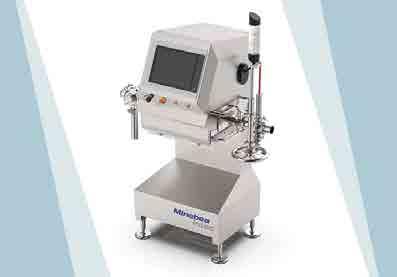
The Dypipe is equipped with an innovative sample insertion system that ensures specimen validation in live operation. "Dypipe will make our clientele's production lines even more efficient," says Linus Dellweg, Global Product Manager at Minebea Intec.
IindustrialAI cameras, today announced the release of a new anomaly detection feature for its Vision Cam AI.go camera. The new feature uses Deep Learning to detect anomalies in production processes, such as defects in manufactured goods or errors in assembly lines. This can help manufacturers improve quality control and reduce costs.
To detect irregularities in produced parts, known as anomalies, a model of what is considered normal is first created. This is done by feeding the camera some images that are identified as correct. Once the model is created, the camera can then detect anomalies by comparing new images to the model. If the new image differs greatly from the model, the camera reports an error.
The Vision Cam AI.go camera is a powerful tool for machine vision. It is easy to use and can be deployed quickly and easily. The new anomaly detection feature makes it even more powerful, providing manufacturers with a valuable tool to prevent costly production errors and meet quality standards.
"Live test piece validation is unique in the market. It gives our customers enormous security. Downtime for quality inspection is a thing of the past." The X-ray inspection system is made of stainless steel and has a protection class of either IP 65 or IP 69. Several interfaces such as XML, TCP-IP for connectivity to, among others, Minebea Intec's SPC@ Enterprise statistical process and pre-packaging control software pave the way for more productivity.
Industry Europe 43 NEWS
INDUSTRYNEWS
Vision
AI.go
IMAGO releases new anomaly detection function for
Cam
TECHNOLOGY & INNOVATION
New developments in Transportation
BASF & Samsung partner
for
onboard maritime carbon capture & storage
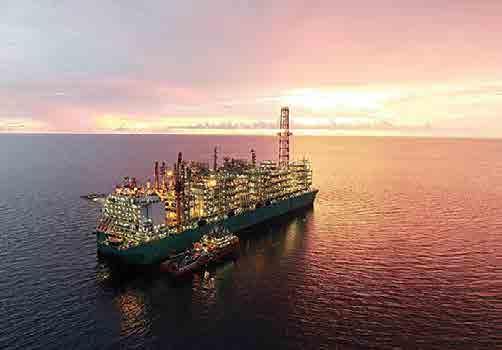
German chemical company BASF and South Korean shipbuilding giant Samsung Heavy Industries (SHI) are carrying out a collaborative feasibility assessment of using carbon capture and storage onboard maritime vessels.
The collaboration includes a marinisation study as well as engineering design and construction of the carbon capture unit.
Along with its expertise in floating liquefied natural gas, BASF will bring its OASE blue technology for flue gas applications, which will provide substantial energy savings when compared with conventional technologies.
SHI will evaluate the feasibility of installing the gas treatment technology onboard maritime vessels. The partnership is in line with the International Maritime Organization (IMO) strategy to reduce the carbon intensity of international shipping by at least 40% by 2030.
Vasilios Galanos, Senior Vice President, Intermediates Asia Pacific, BASF, said, "Leveraging our state-of-the-art OASE technology, we are pleased to expand our cooperation with SHI and support it in navigating through tightening carbon emission regulations. We will join hands with our partner to sail towards a greener future."
"Through cooperation with BASF, Samsung Heavy Industries has developed an efficient Onboard Carbon Capture system, which will help gain a
competitive advantage in a low carbon shipping market," said Youngkyu Ahn, Head of Shipbuilding Sales Engineering at Samsung Heavy Industries. Shipping is considered one of the hard-to-abate sectors and the industry is currently experiencing a push towards decarbonisation.
VW cuts delivery forecast amid uncertain economic outlook
estimates. Net cash flow dropped to 226 million euros and the net cash position saw a 72% slump over the June quarter.
CFO Arno Antlitz stated that the priority for the latter half of the year will be on reinforcing net cash flow. He expressed optimism that costcutting initiatives across the carmaker's brands would assist in improving the current situation.
Despite the downward revision, the automaker maintains its aim to achieve a fullyear net cash flow of between 6 billion and 8 billion euros ($6.66 billion-$8.88 billion).
Fdelivery forecasts downwards due to economic volatility and increasing competitive pressure in China. The company will now be focusing on enhancing net cash flow for the remaining part of the year.
Instead of the initially projected 9.5 million units, VW Group is now anticipating full-year deliveries to range between 9 million and 9.5 million vehicles. In response to lower deliveries,
VW reported that the supply of crucial components, such as semiconductors, has improved, but logistical and transportation delays impacted the first half of the year. Despite these setbacks, the company predicts shorter wait times for the latter half of the year and reports a steady demand, with order books filled to 1.65 million vehicles.

Q2's adjusted operating profit was 5.6 billion euros ($6.2 billion), which fell short of analyst
In the first half of the year, core brands including Volkswagen Passenger Cars, VW Commercial Vehicles, Seat, Skoda, and Cupra managed an operating margin of 5.5%. Meanwhile, brands like Audi, Lamborghini, Bentley, and Ducati achieved a 10% operating margin.
Efficiency-improvement programs, known as performance programs, are being undertaken by all the group's brands, with Volkswagen Passenger Cars alone committing to 10 billion euros ($11.09 billion) in efficiency gains by 2026. The company stated that the effects of these initiatives should start becoming evident in the second half of the year.
44 Industry Europe NEWS
INDUSTRYNEWS
XPO Logistics enters the Big Logistics Diversity Challenge for the third year, highlighting moves to boost diversity and inclusion
XPO, a leading provider of innovative and sustainable transport and logistics solutions in Europe, entered a team in the Big Logistics Diversity Challenge 2023 for the third year in a row.
The challenge, which was held this year at the Newark Showground in Nottinghamshire, brings together companies within logistics to take part in mental and physical team building events that all support inclusion and diversity.
The XPO team successfully collaborated to achieve the competition’s highest score.
Lynn Brown, vice president, human resources – UK and Ireland, XPO Logistics, said: “It may be a cliché that teamwork makes the dream work but at XPO we genuinely believe in the potential of our people, working together to deliver excellence for each of our stakeholders. By leveraging the diversity of our colleagues, we achieve truly great things – together. The Big Logistics Diversity Challenge is a practical demonstration
of effective teams working together to succeed, and we’re proud to support and take part in this unique event.”
XPO is currently running numerous diversity and inclusion initiatives across its business, including supporting women within logistics, encouraging veterans into logistics and supporting Pride. It also is launching its neurodiversity programme across the UK and Ireland.
XPO actively encourages discussions to inform and educate colleagues and strengthen awareness, including the importance of challenging perceptions and helping people understand the power of diversity and inclusion allies.

Other initiatives include:
• Amplifying the voices of all employees, including women, veterans, and members of the LGBTQ+ community.
• An Environmental, Social, Governance (ESG) scorecard and reporting which provides a consistent structure for evaluating the management of ESG initiatives and for incentivising long-term ESG achievements.
XPO contributes to a rich, inclusive and equitable culture through its decisions and actions. In doing so, we aim to support the professional development of all colleagues regardless of gender identity, nationality, age, education, career interest, disability, and ethnic and social life experiences.
EU Unveils Measures to Make Freight Transport More Sustainable

cantly impacts climate change, contributing to over 30% of carbon dioxide emissions in the sector, the Commission noted.
This package was announced just a day before a key European Parliament vote on a proposed nature restoration law, another aspect of the Green Deal. The parliament's largest political group stated it would vote against it, citing concerns about the costs associated with such an ambitious transition.
The primary proposals of the transportation package, which require endorsement from the European Parliament and member states to be enacted, are outlined below:
Transportation Type Measures:
Tgreening
freight transportation, part of a comprehensive plan to achieve climate neutrality across the bloc.
According to a Tuesday statement, the European Commission plans to enhance the management of railway infrastructure, introduce incentives for zero-emission vehicles, and equip companies with improved resources for determining their carbon emissions. These steps are designed to support the EU's goal of reducing transportation-related emissions by 90% by mid-century.
“With an annual turnover of €938 billion generated by freight transport in the EU, our initiatives are designed to enhance rail capacity for freight and international trains," said Transport Commissioner Adina Vălean. “We aim to implement a consistent and accurate system for calculating transport emissions, and to boost the efficiency of road transportation.”
This decision is in alignment with the EU's Green Deal, a broad strategy aimed at decarbonizing the economy by 2050. Freight transport signifi-
• Rail - The plan seeks to standardize international rail traffic. A new structure for cross-border coordination will enable infrastructure managers to schedule timetables, maintenance, and capacity allocation. Cross-border coordination will also offer new long-distance services.
• Road - The commission plans to revise the regulations on maximum dimensions for heavy-duty vehicles, allowing for extra weight for those utilizing zero-emission technologies. The aim is to promote the adoption of more aerodynamic cabins and other energy-saving devices.
• Carbon footprint - The package proposes a shared methodology for companies wishing to disclose their greenhouse gas emissions, which will promote increased transparency.
Industry Europe 45
NEWS
TRANSPORTATION

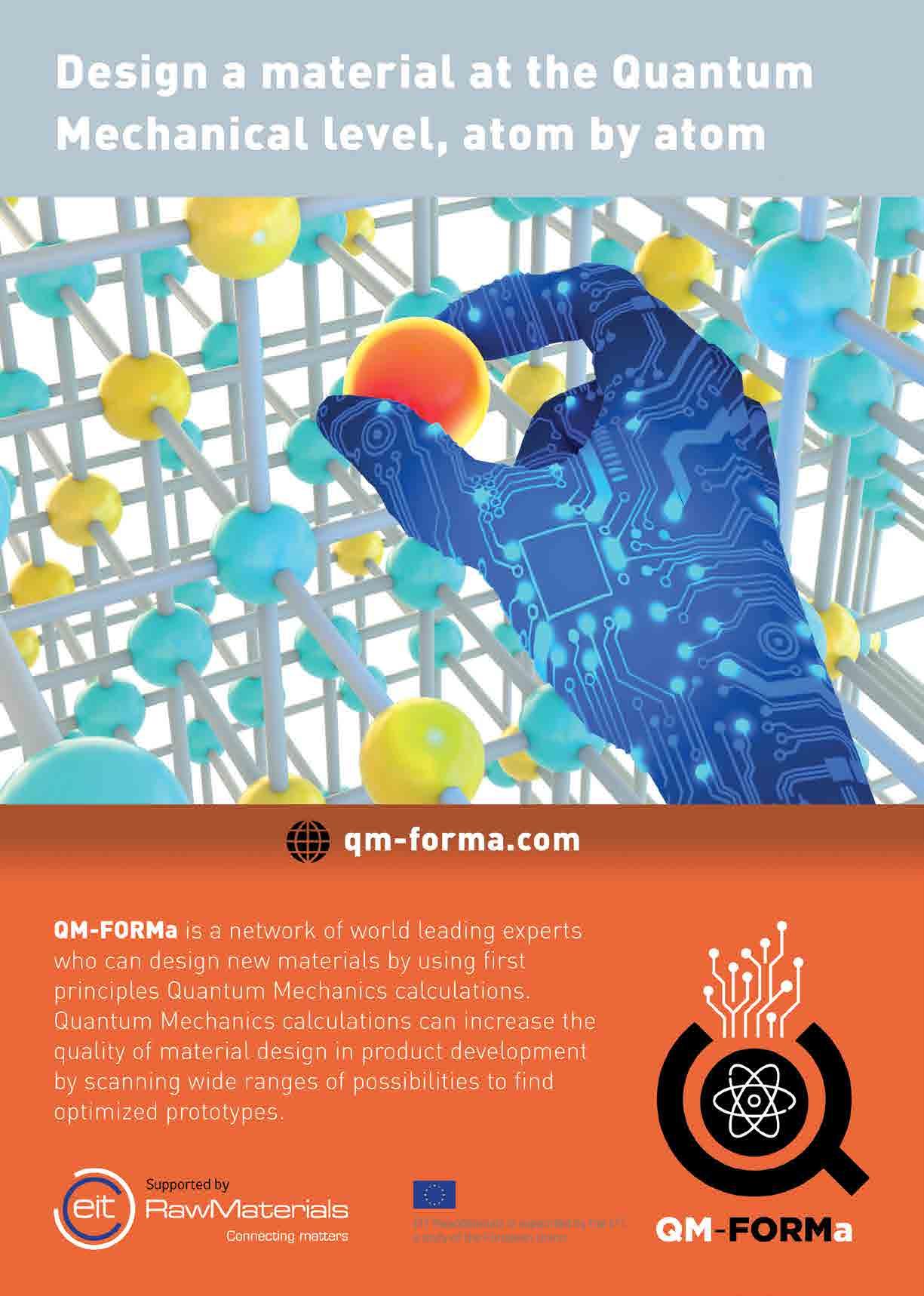































































 DGTronik CEO, Mr. Krzysztof Izewski
DGTronik CEO, Mr. Krzysztof Izewski











































